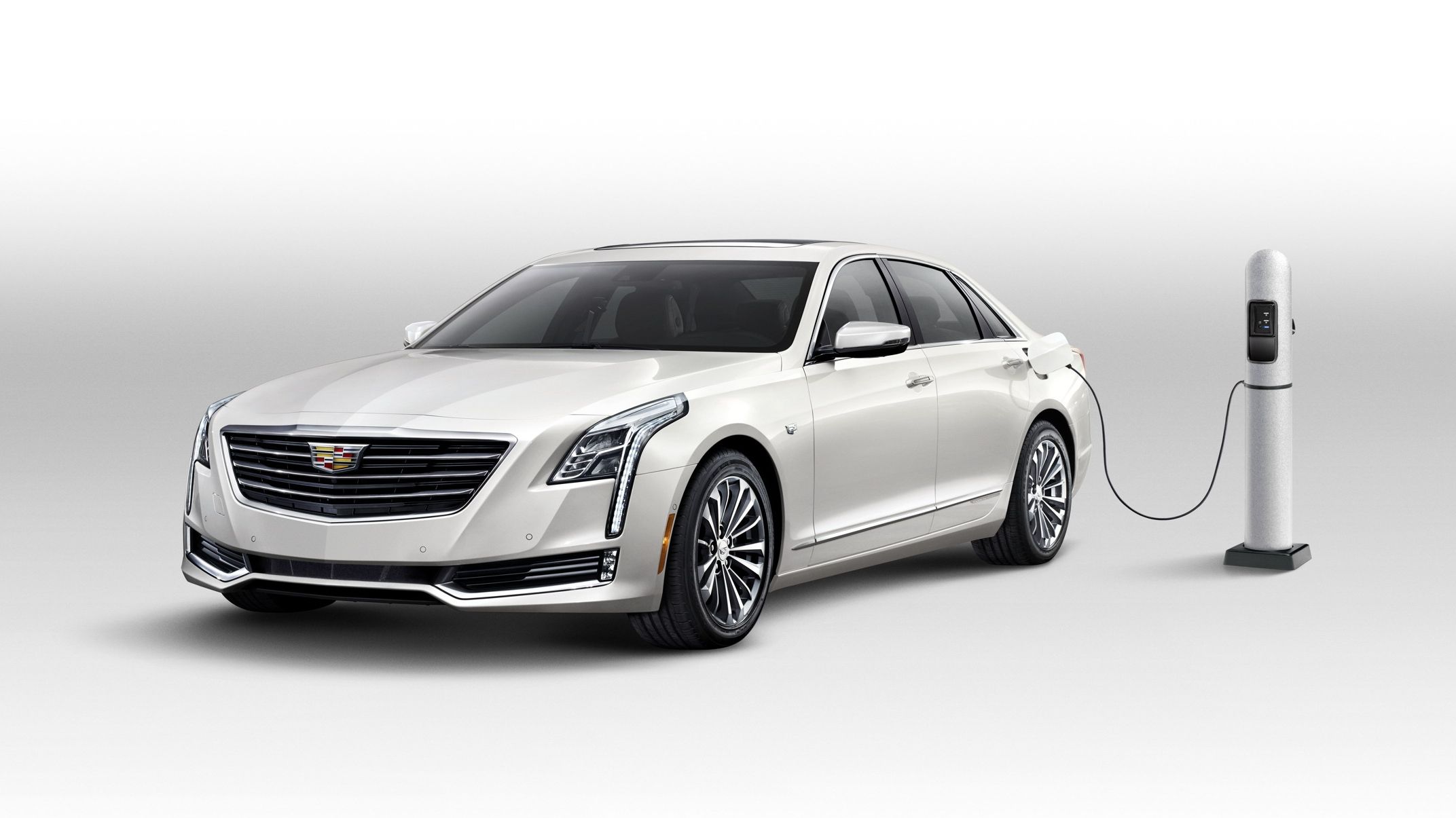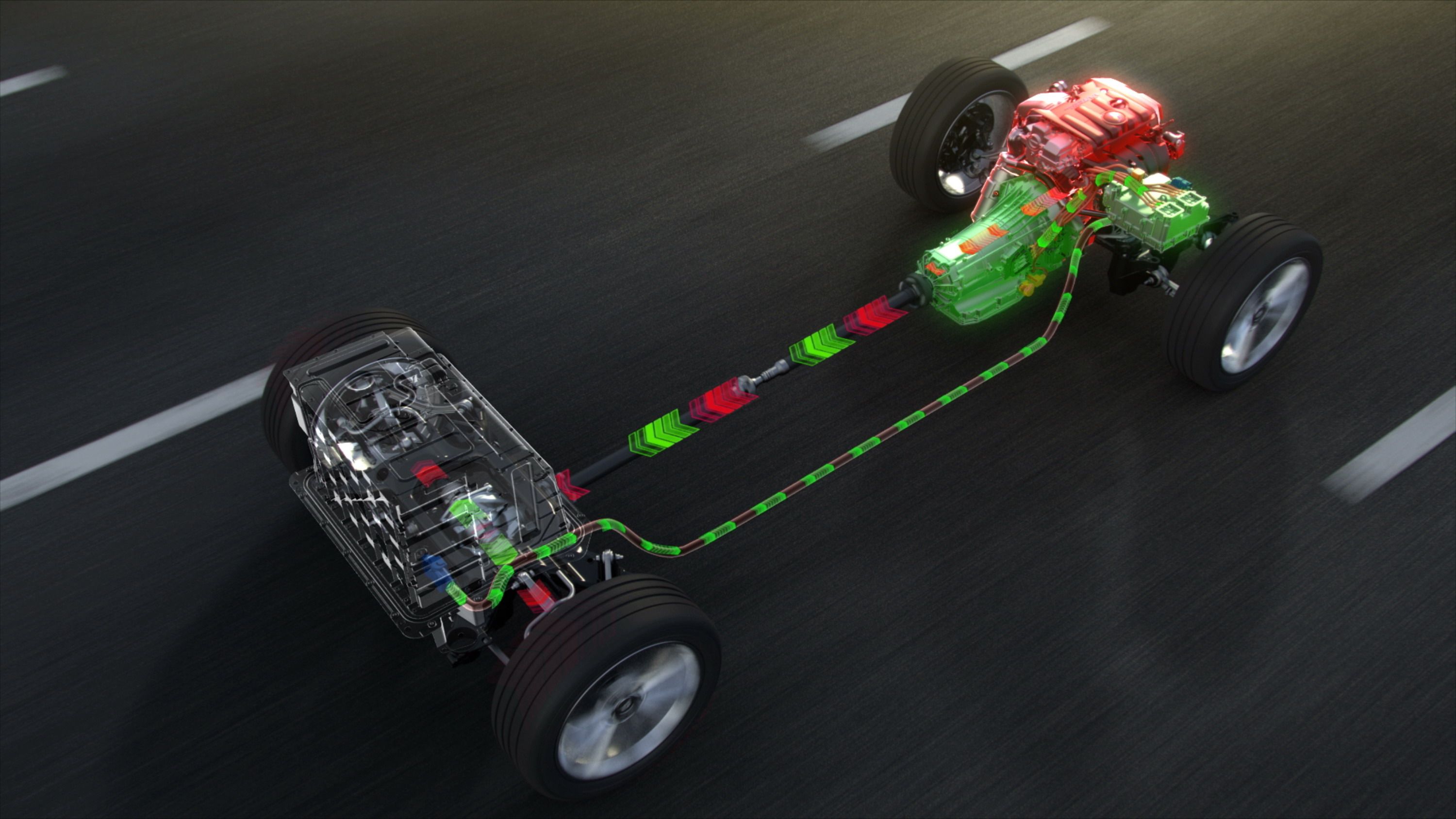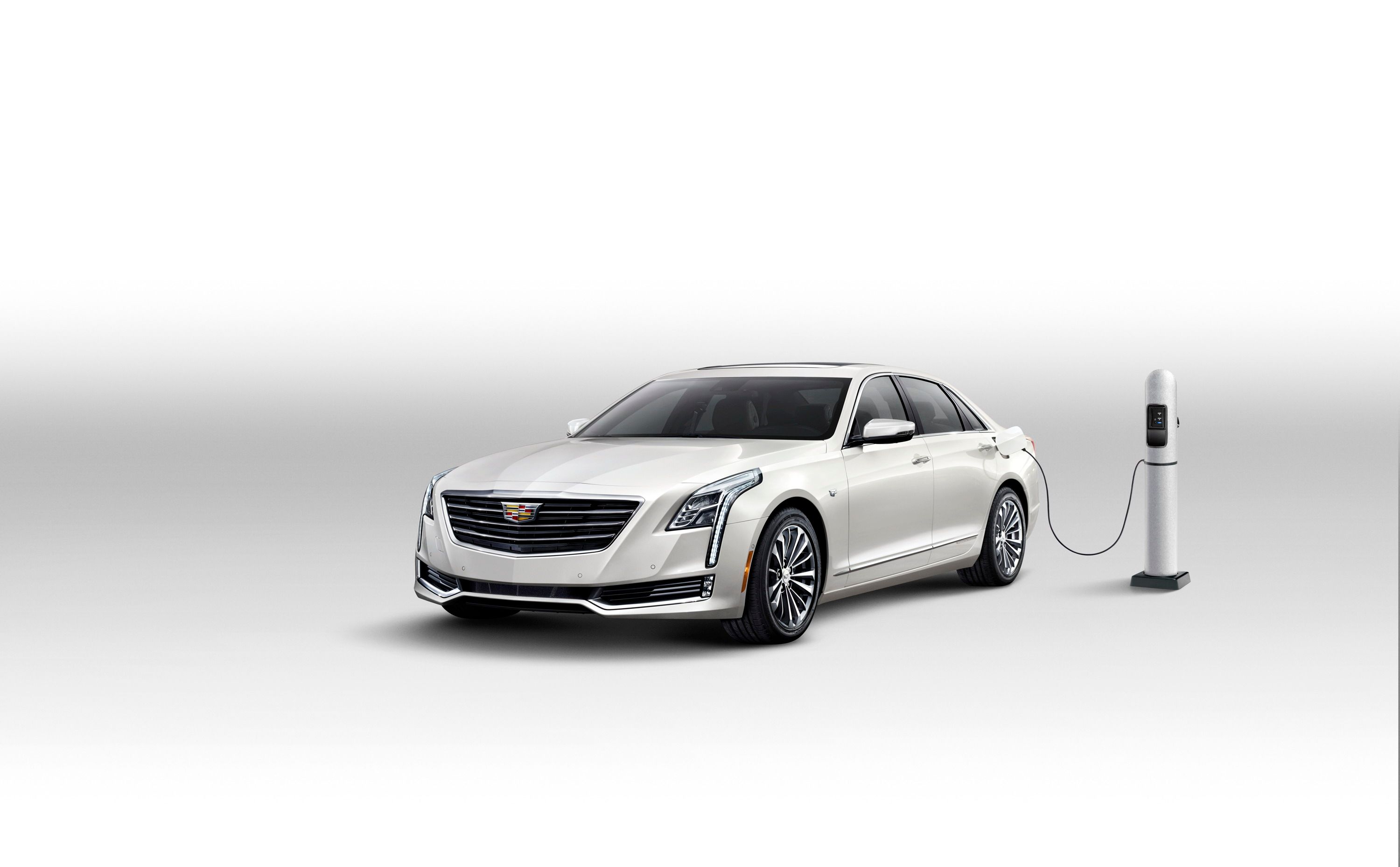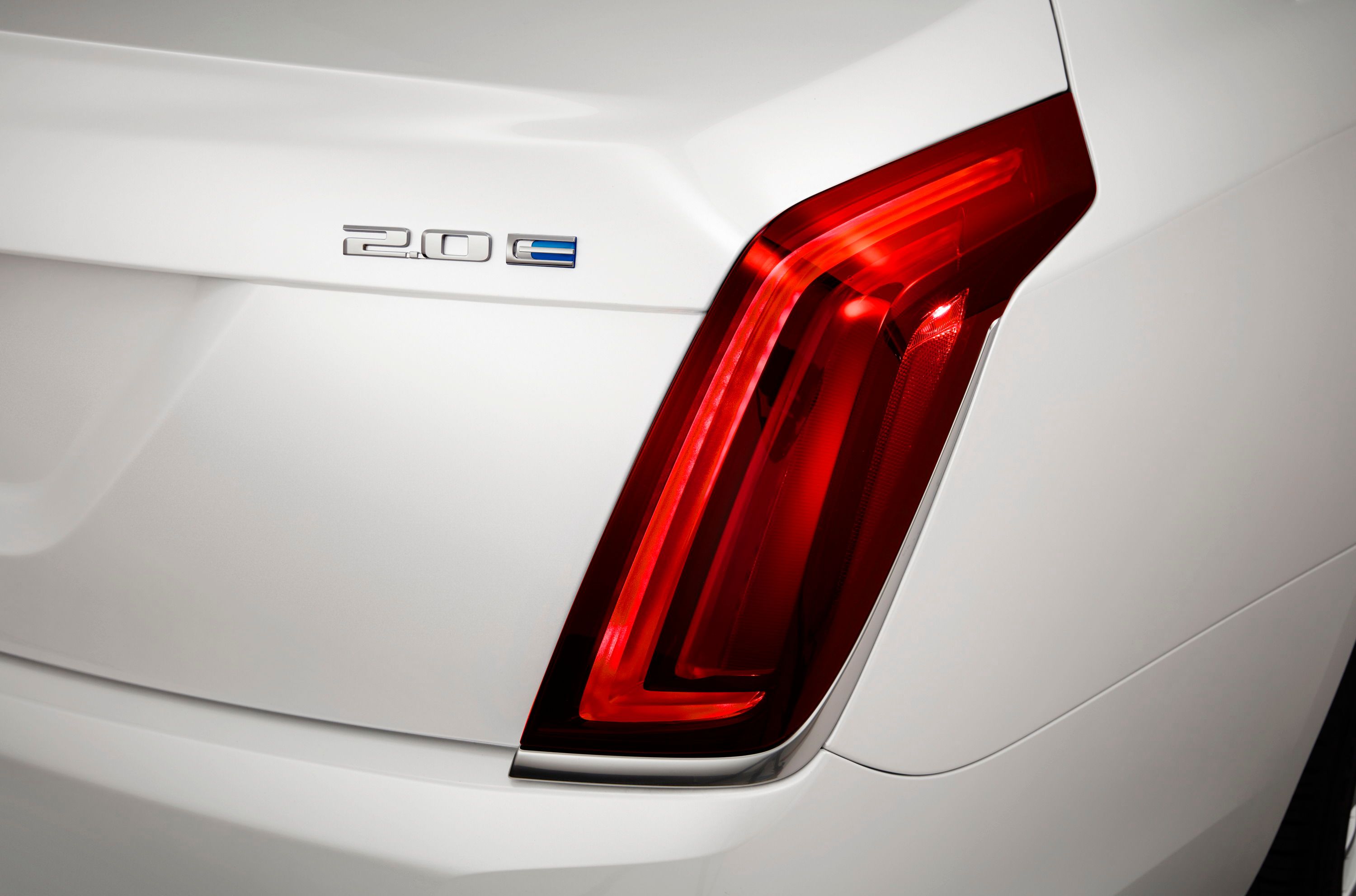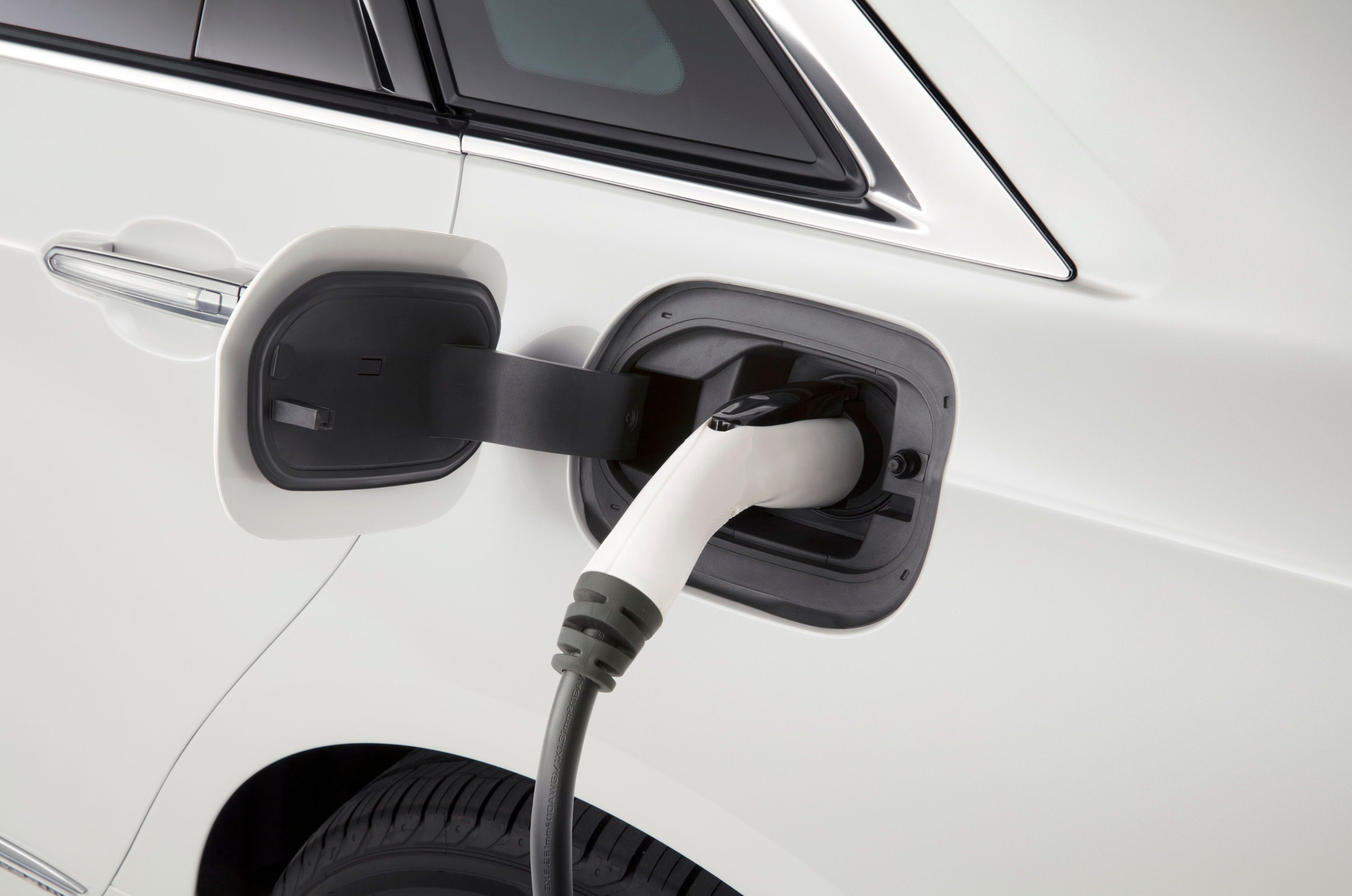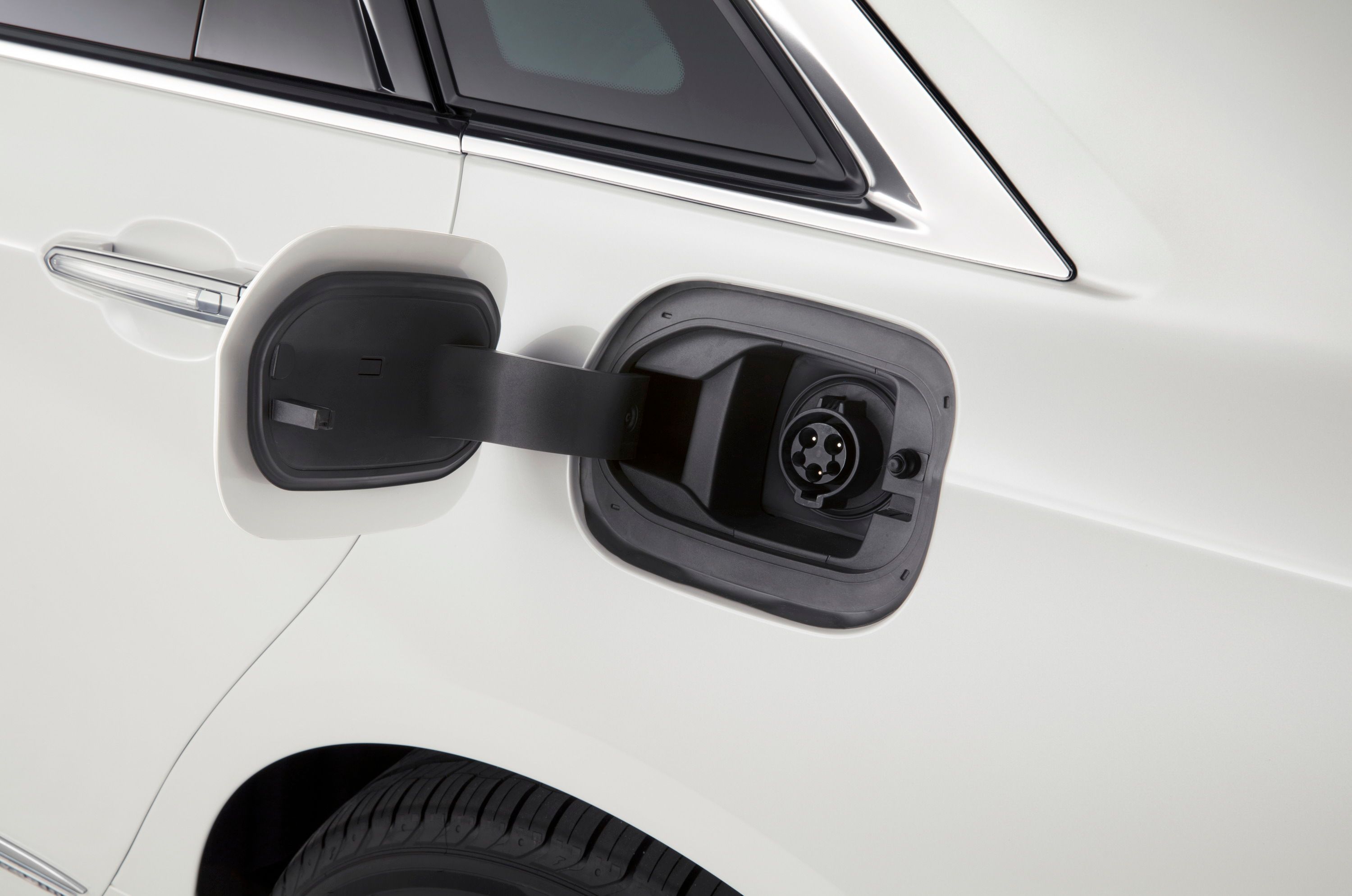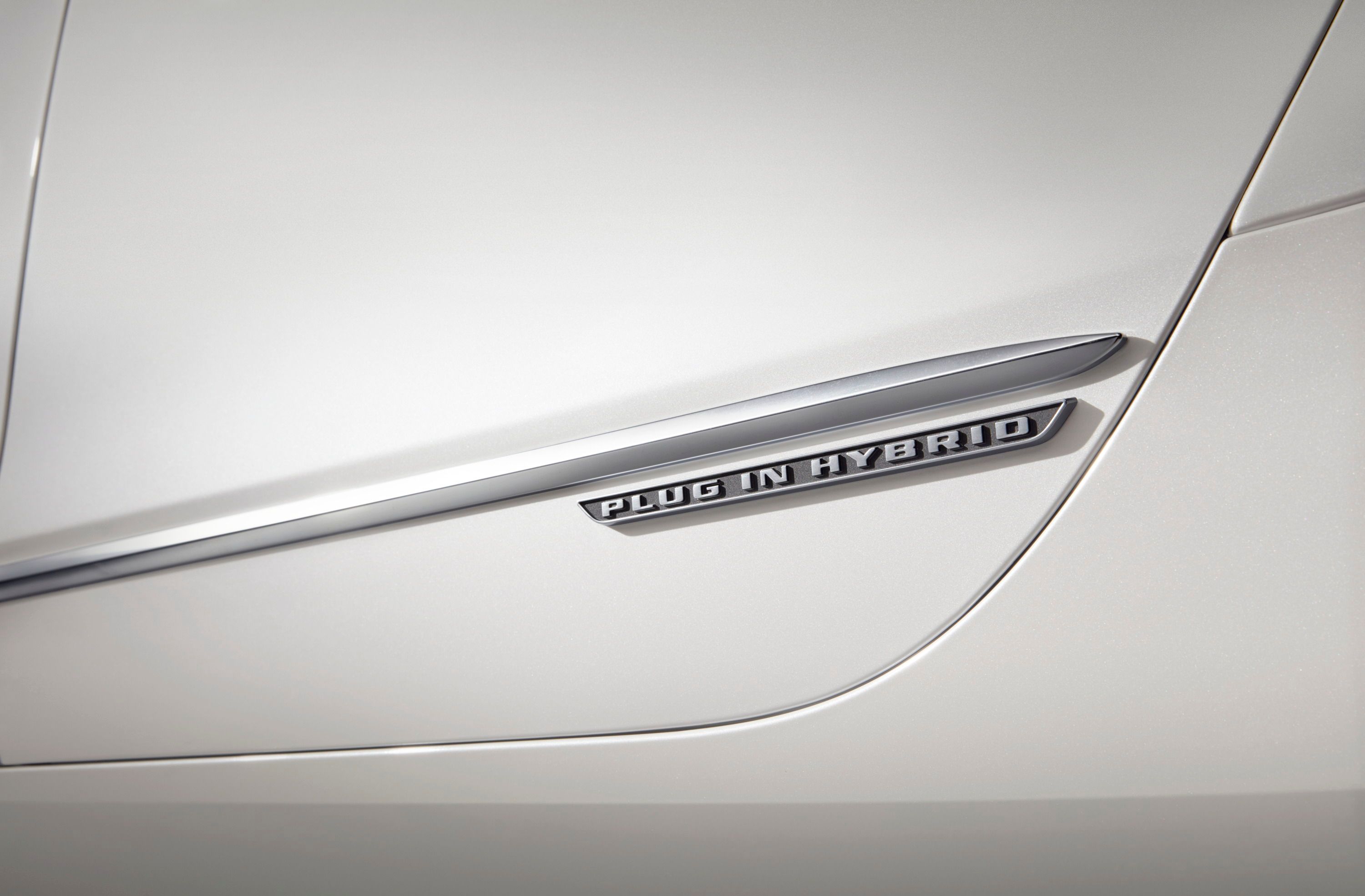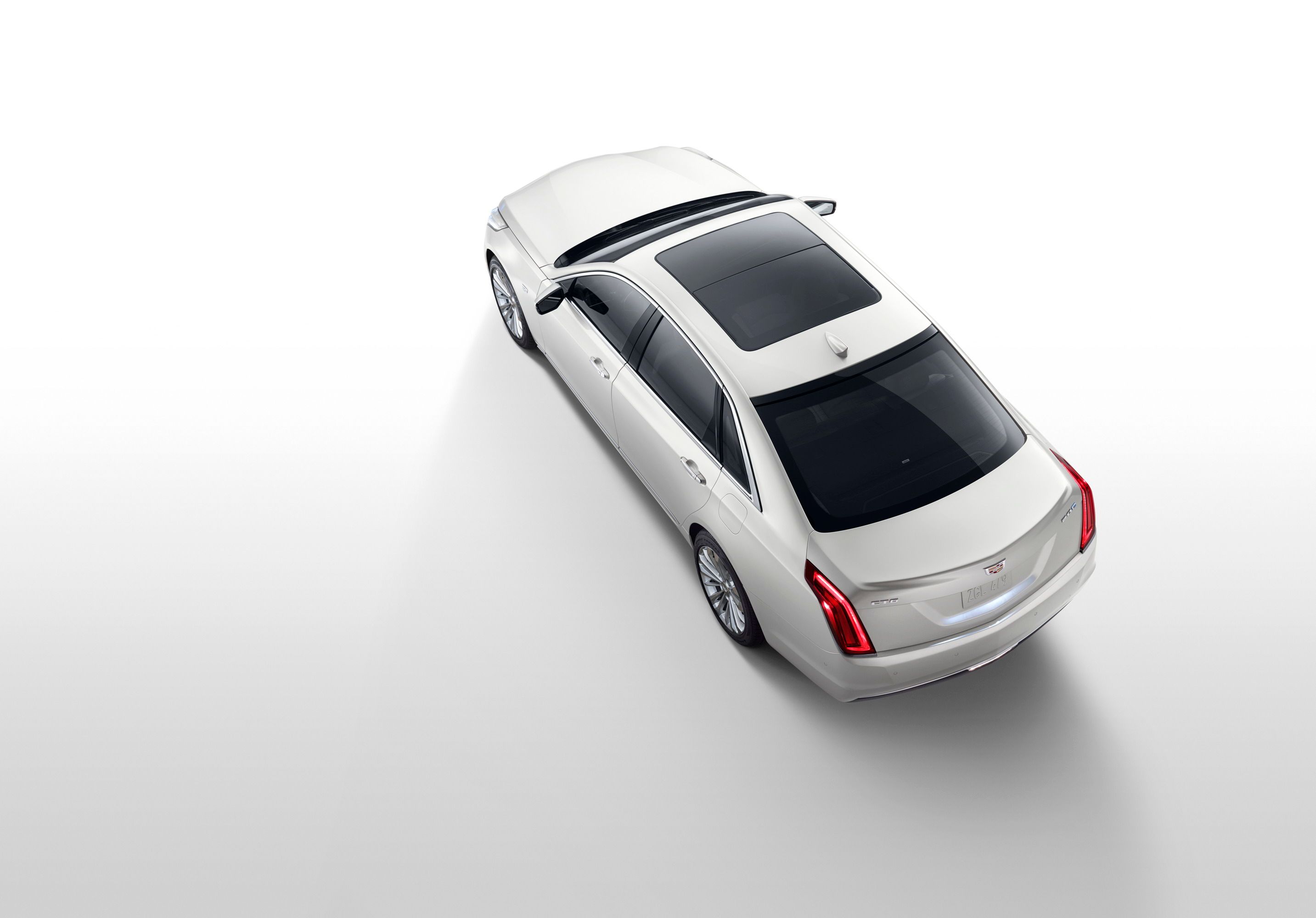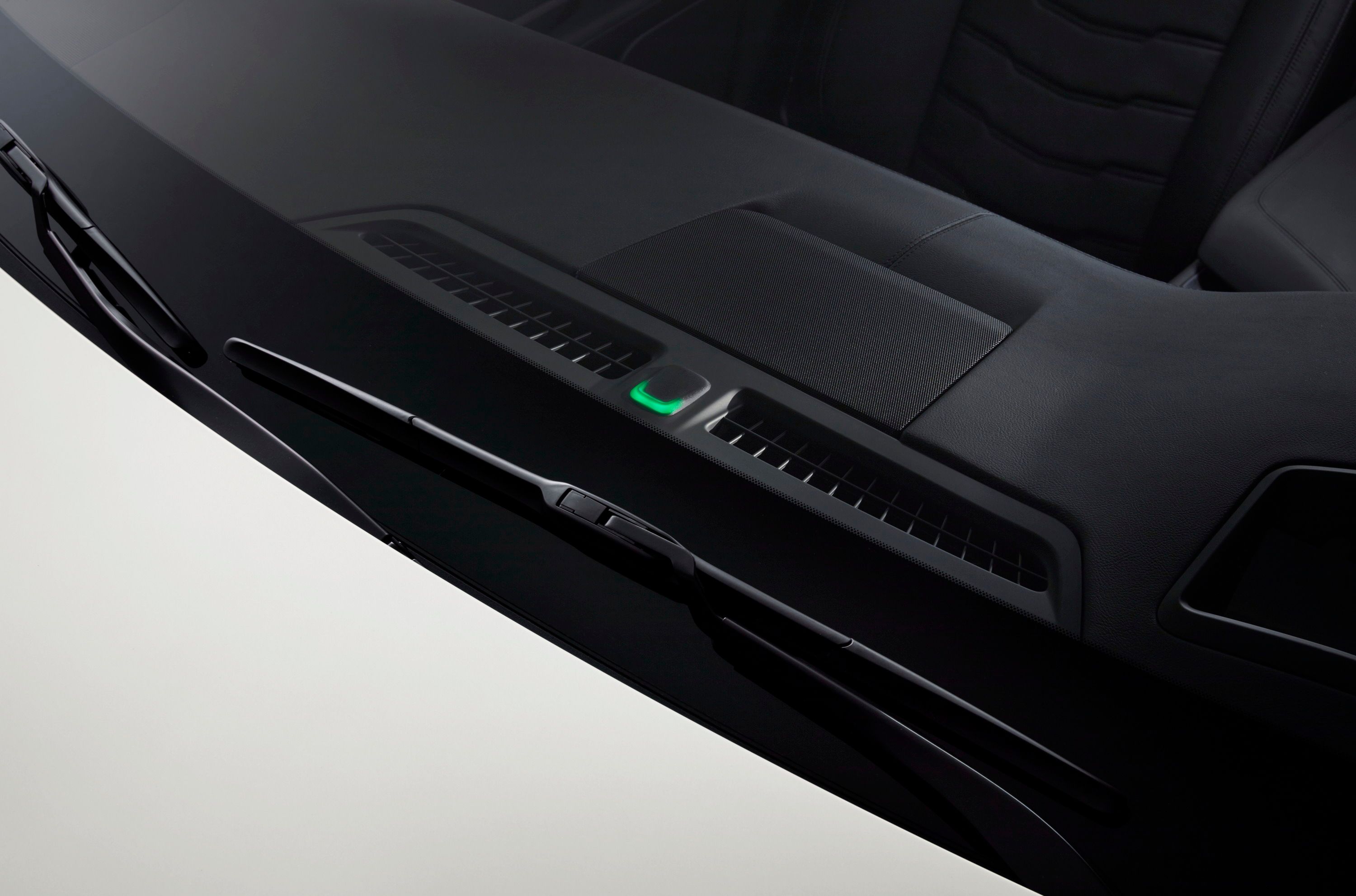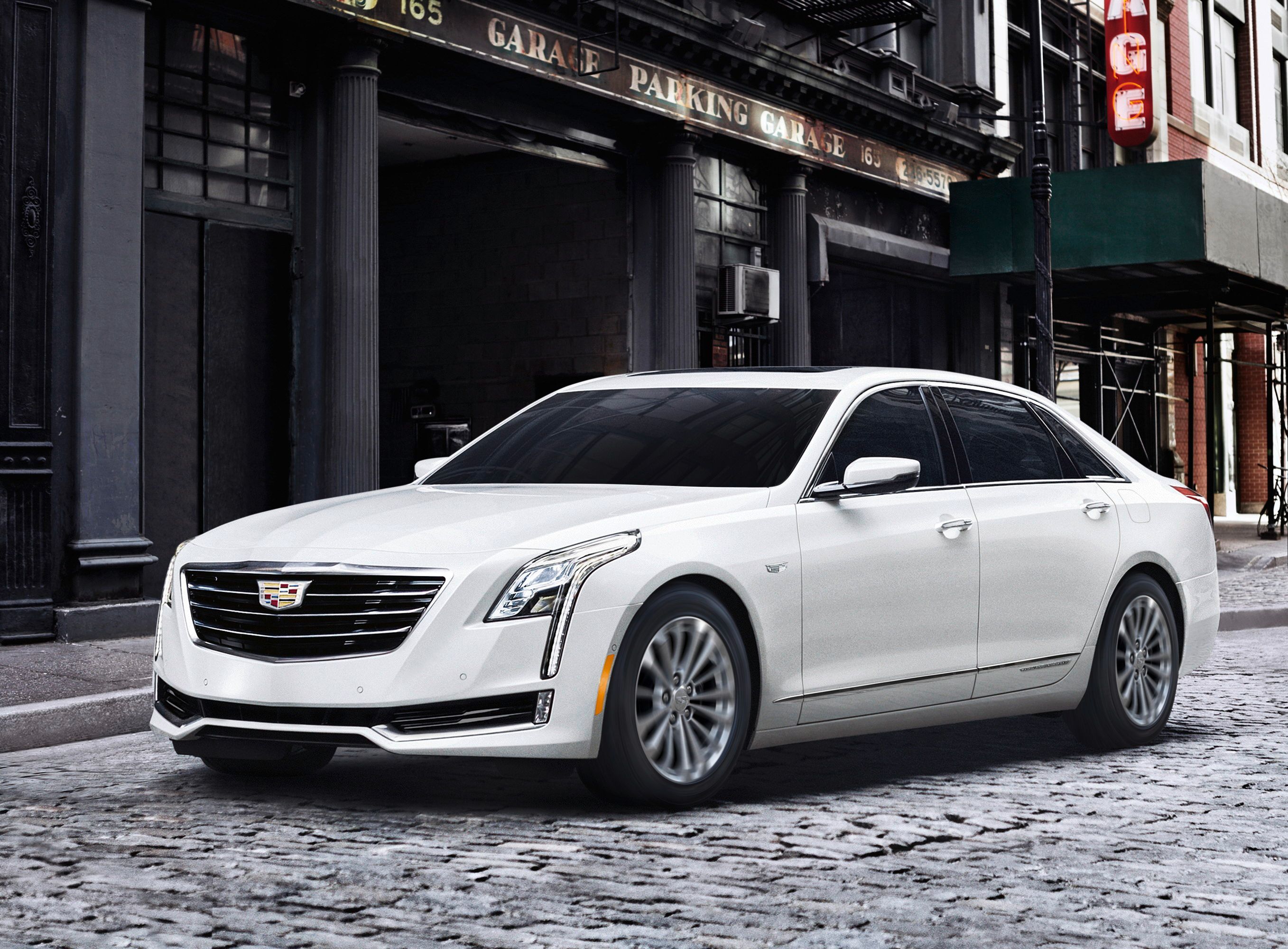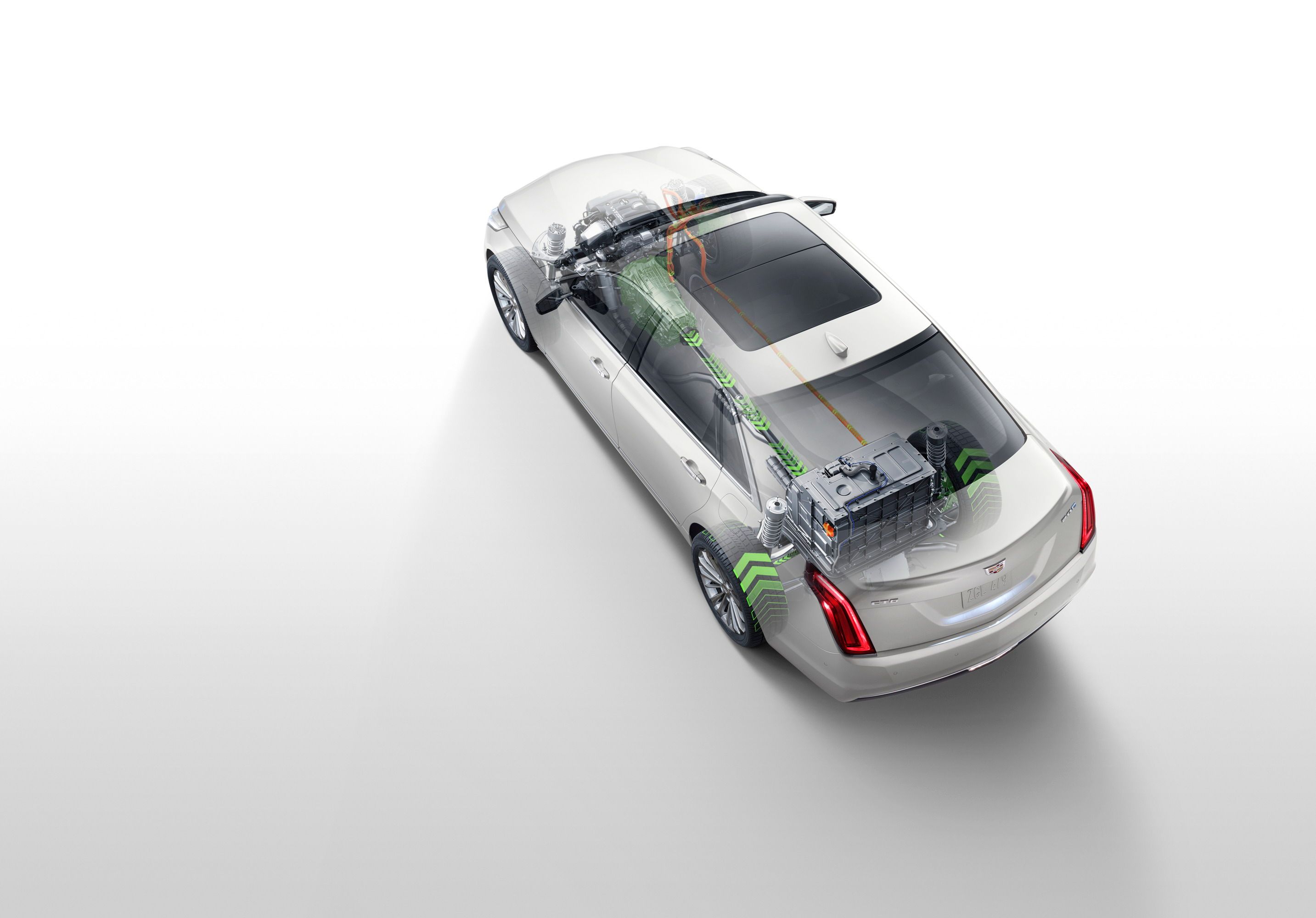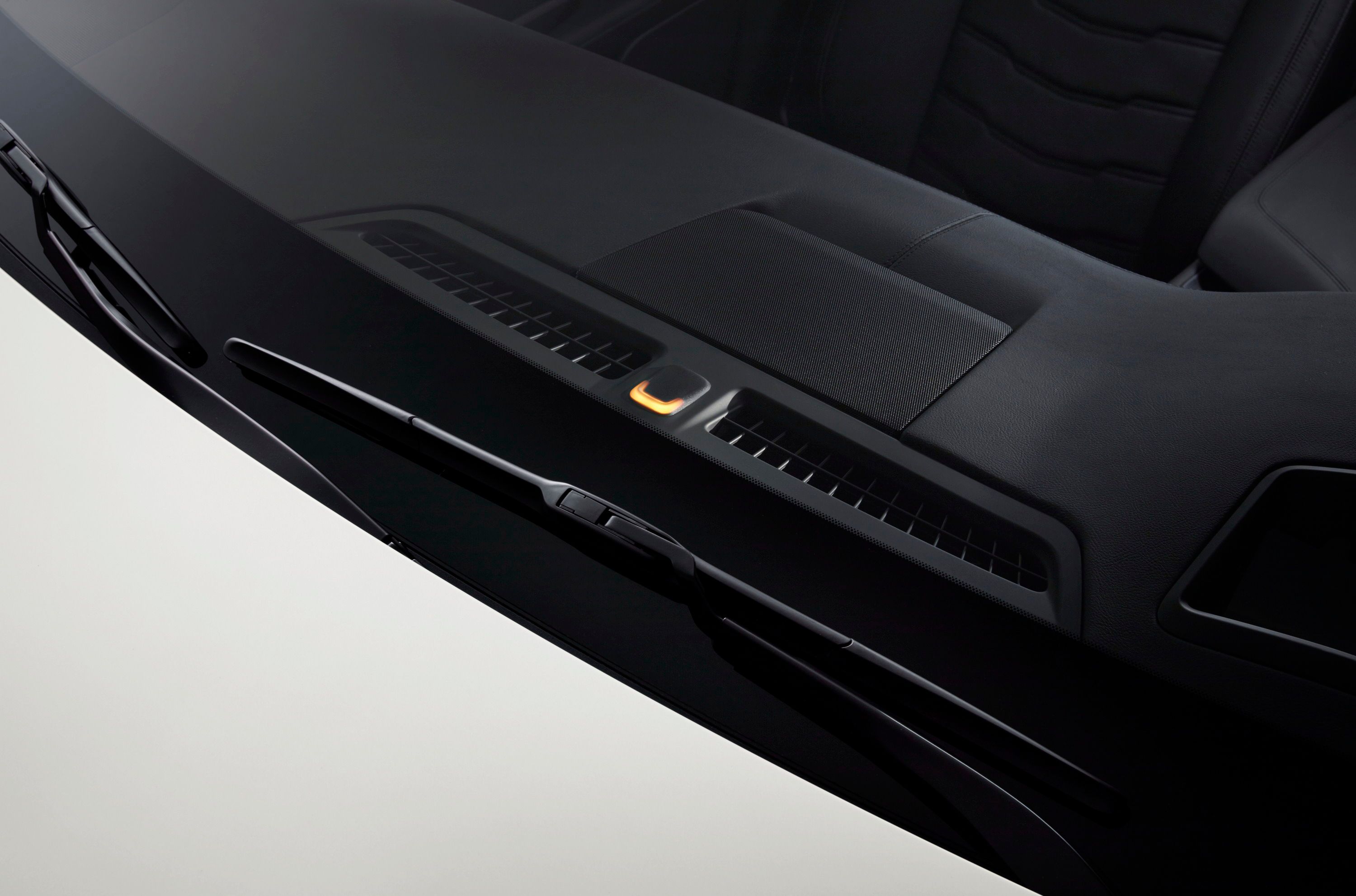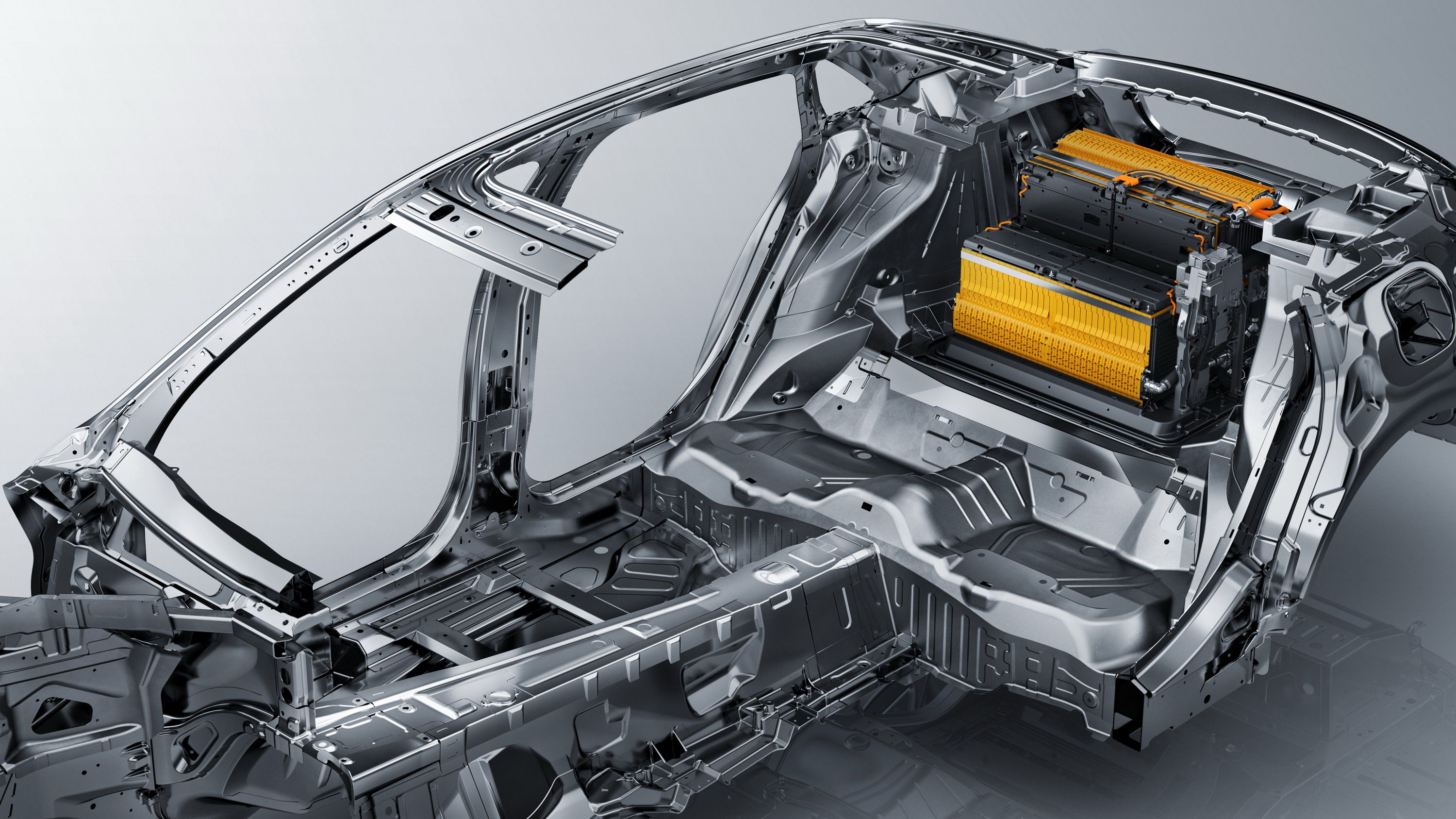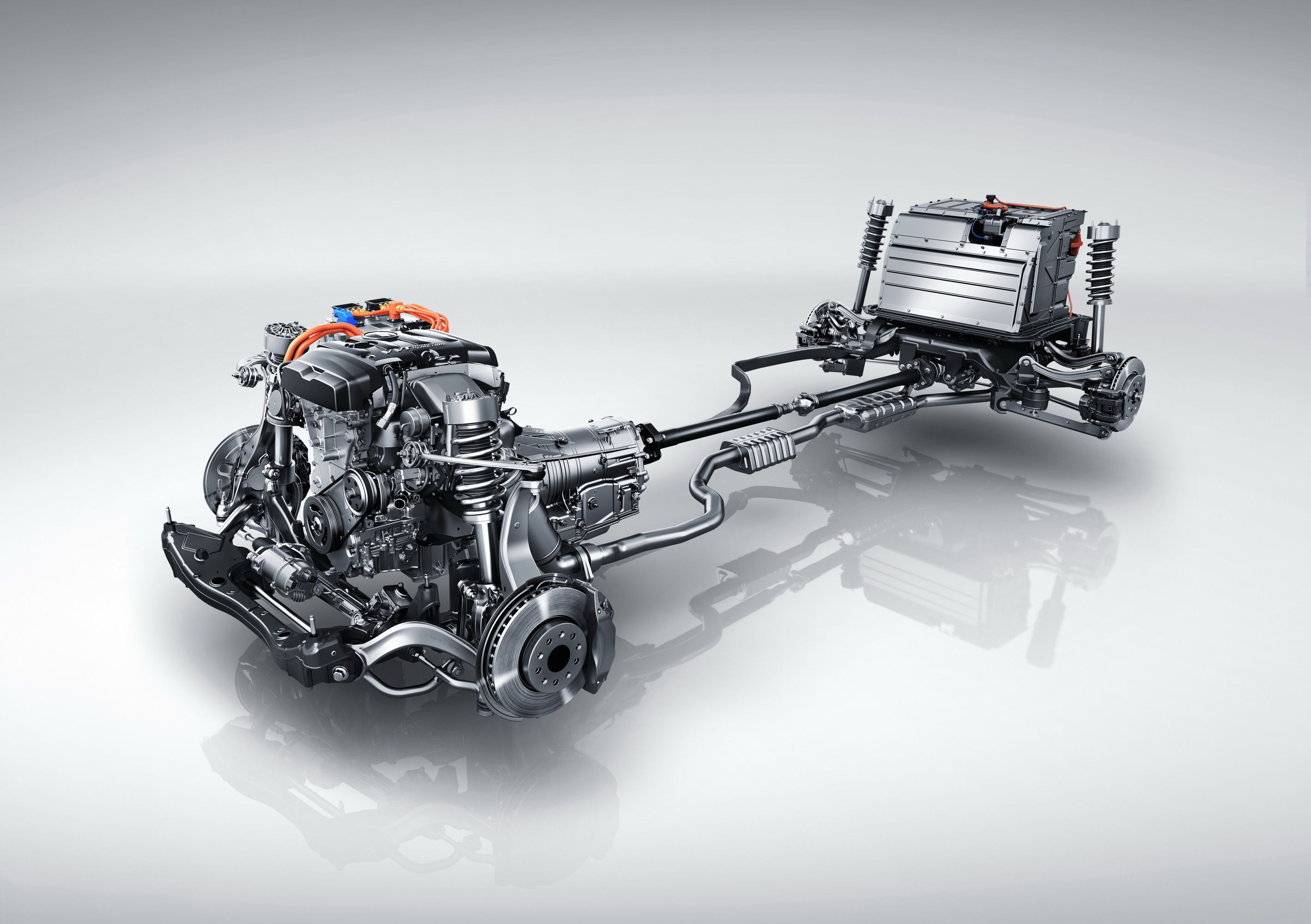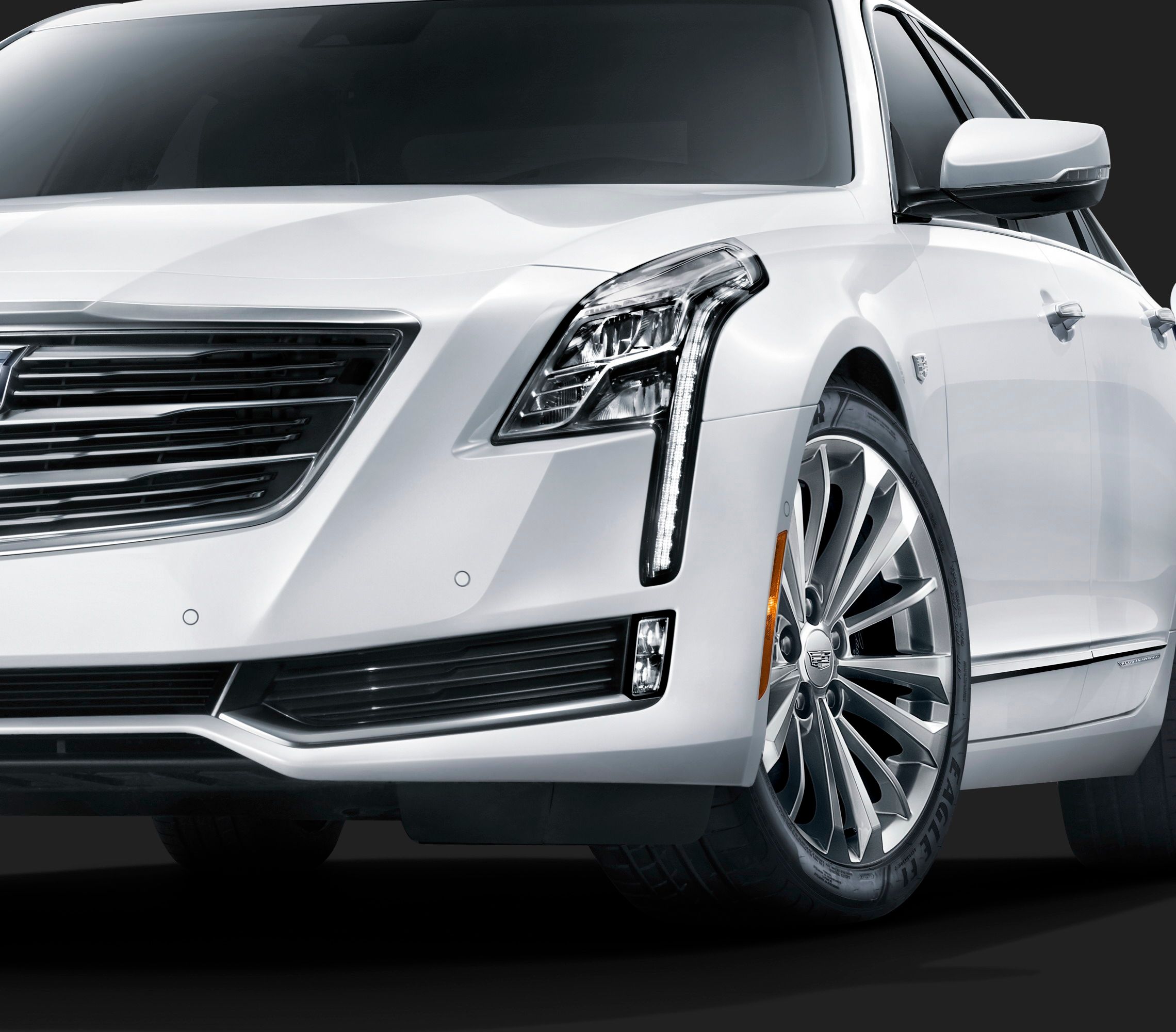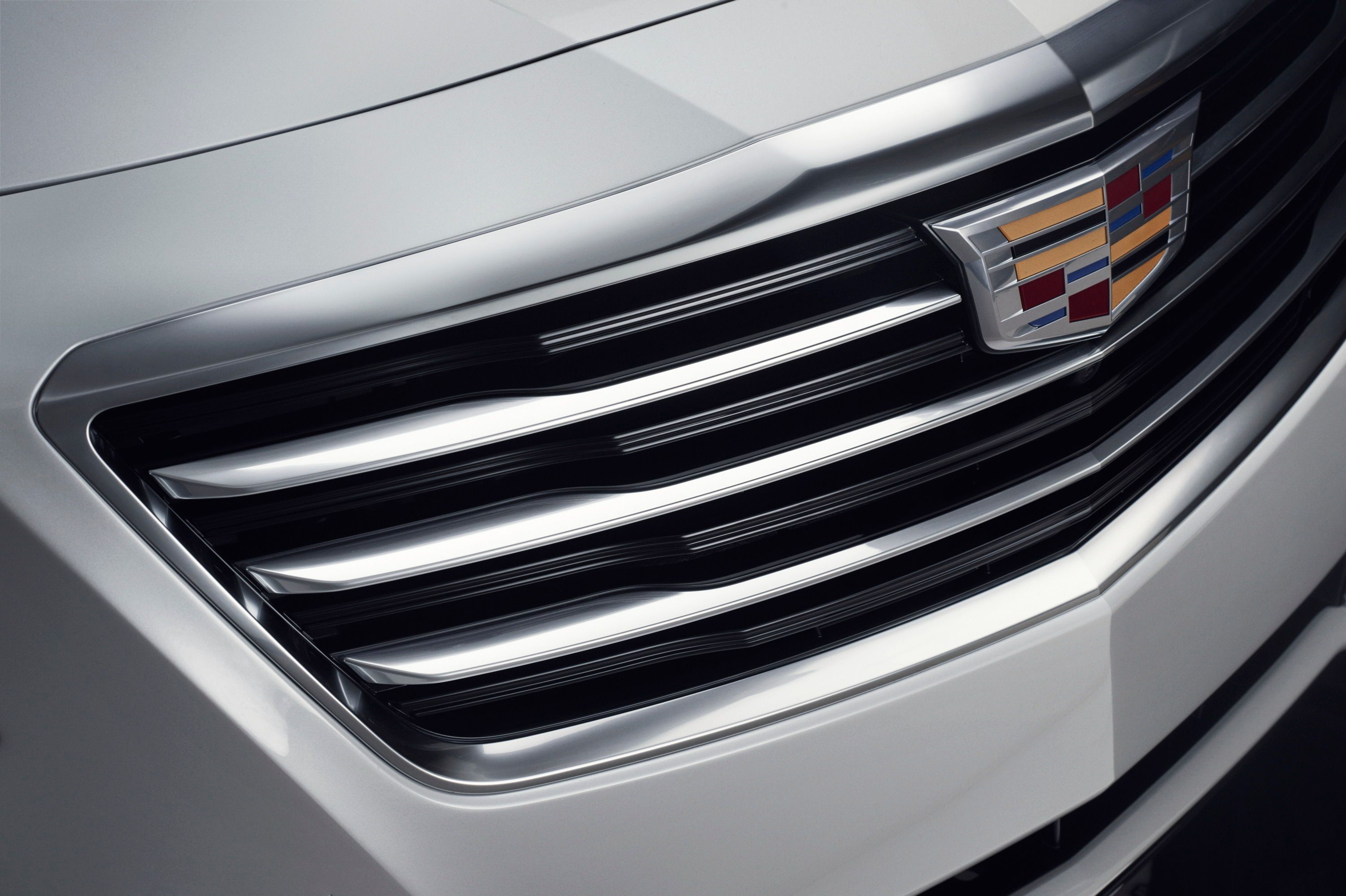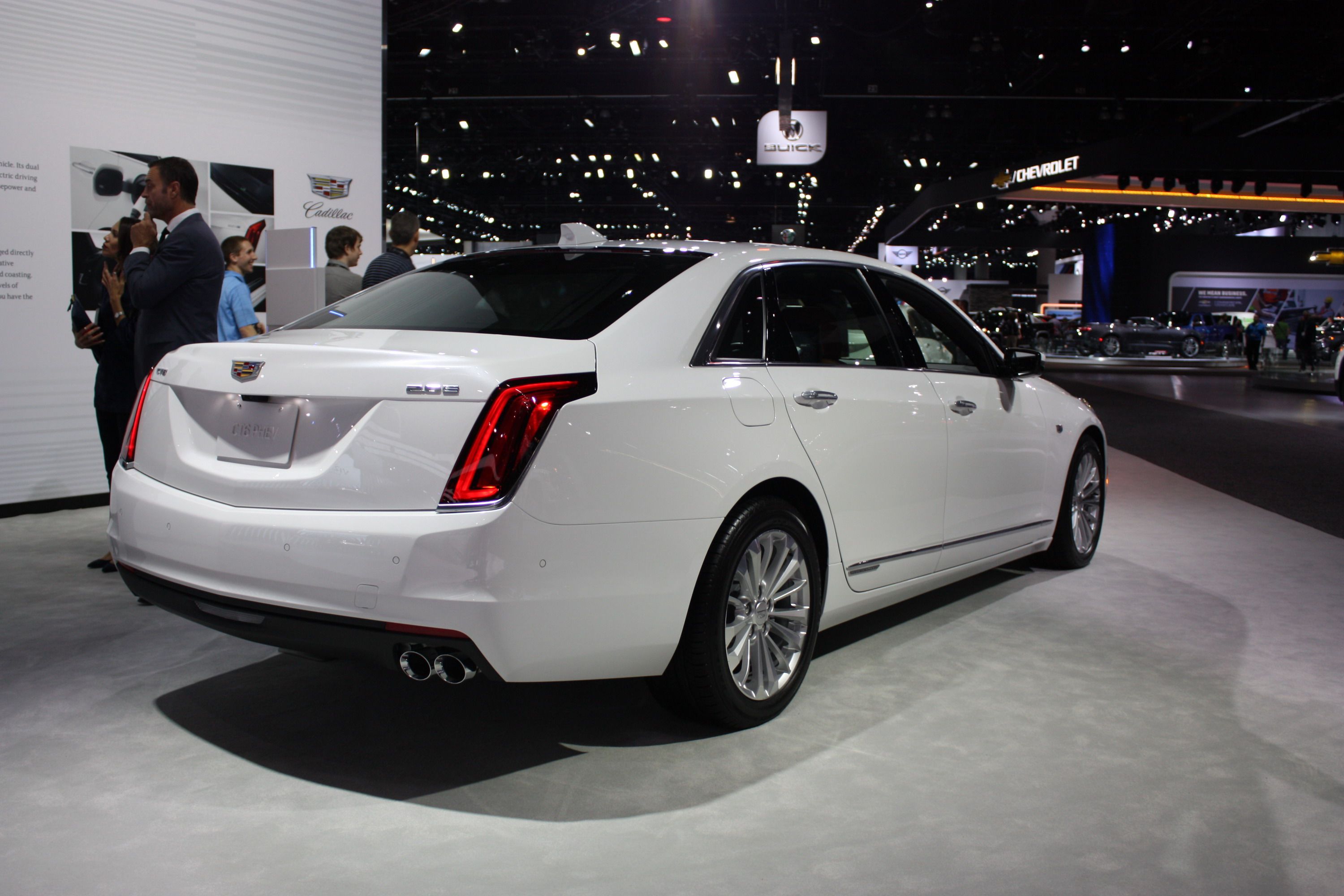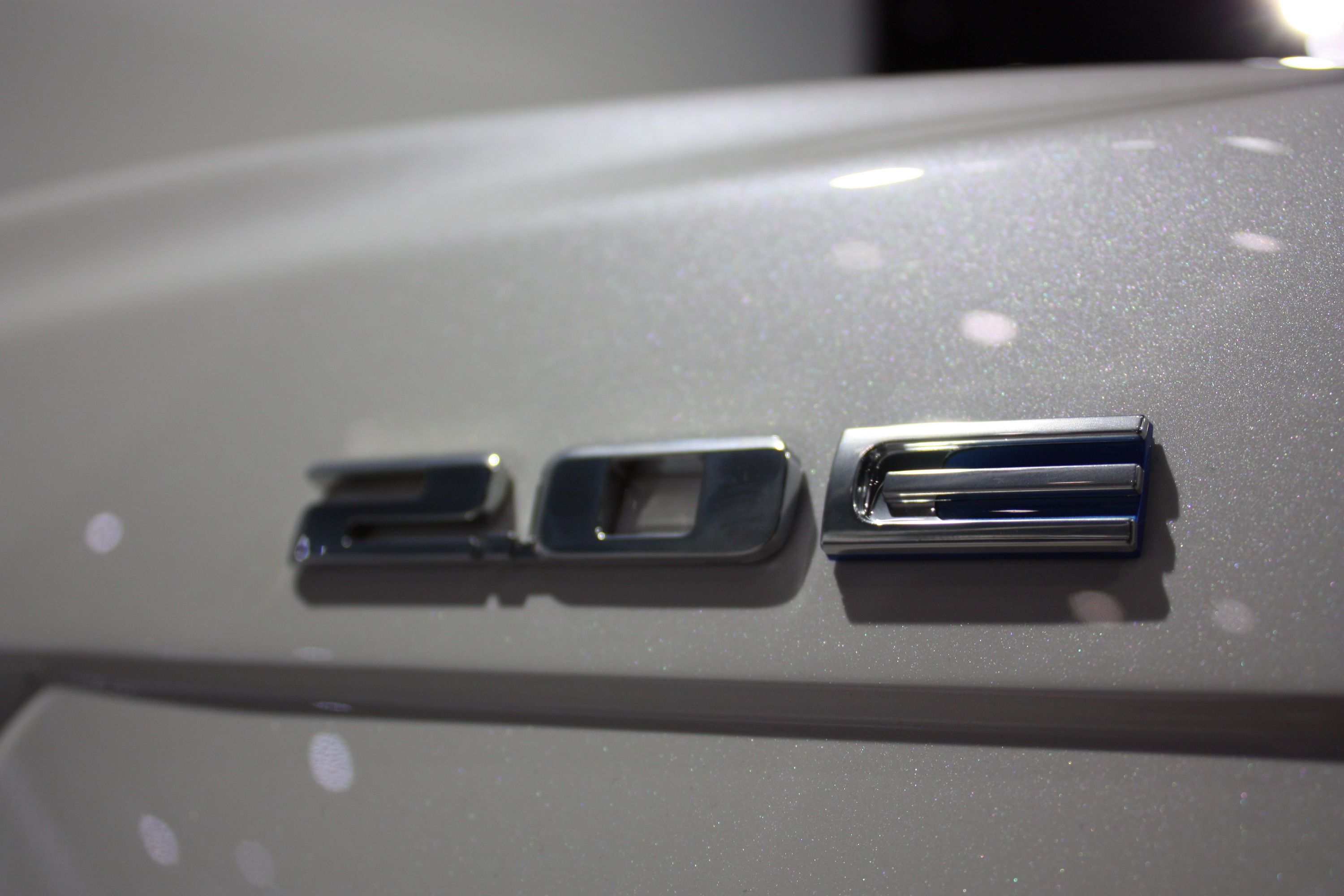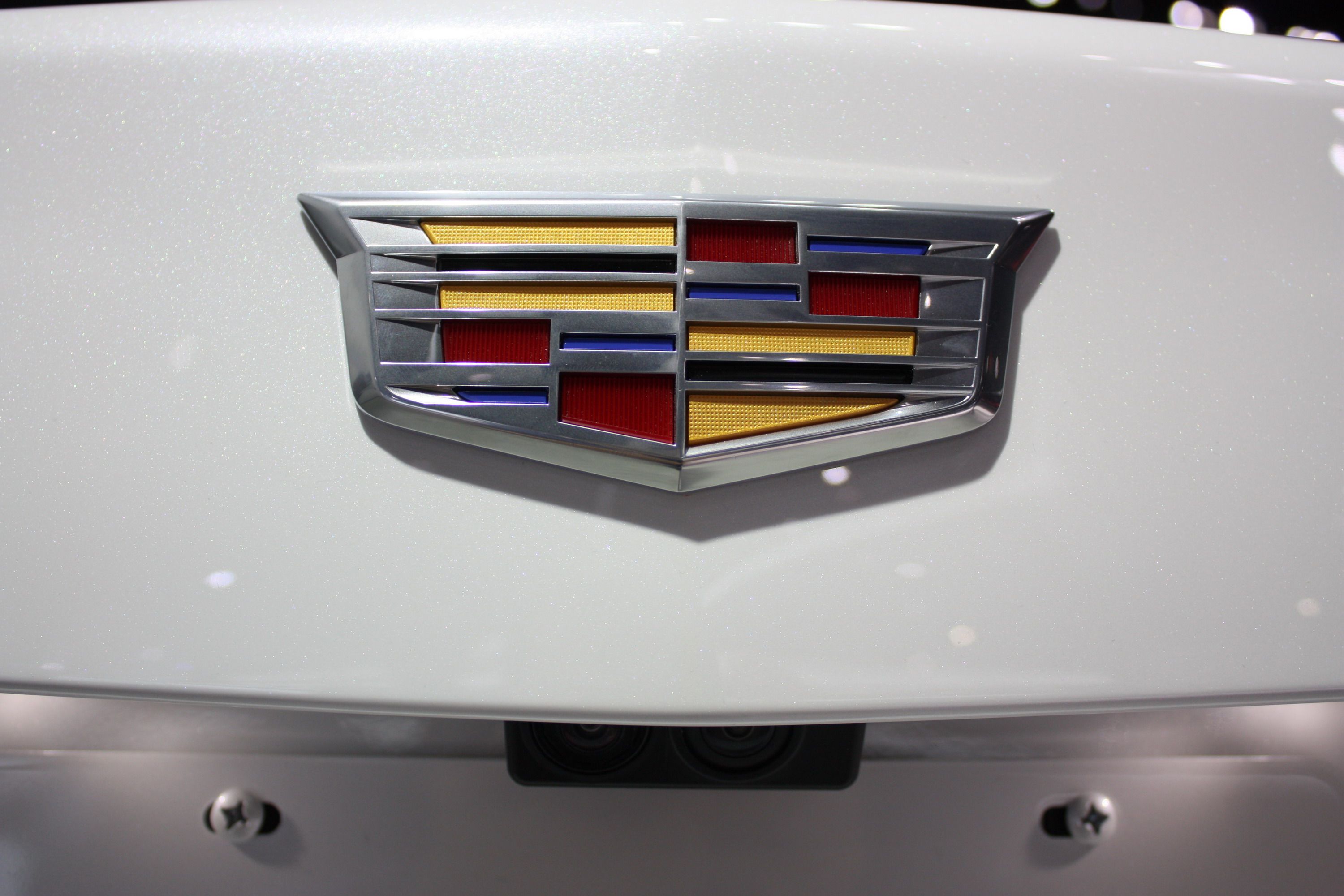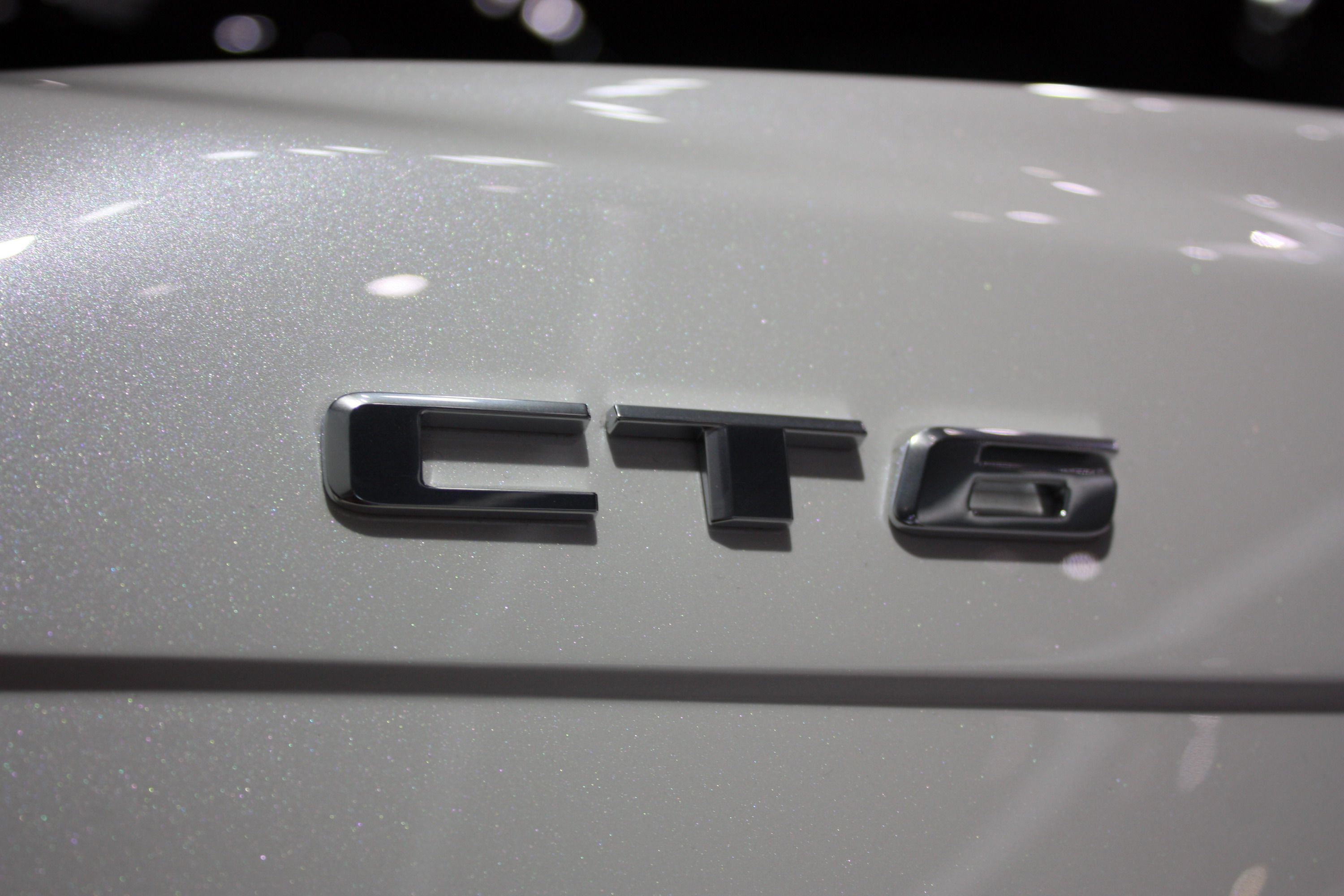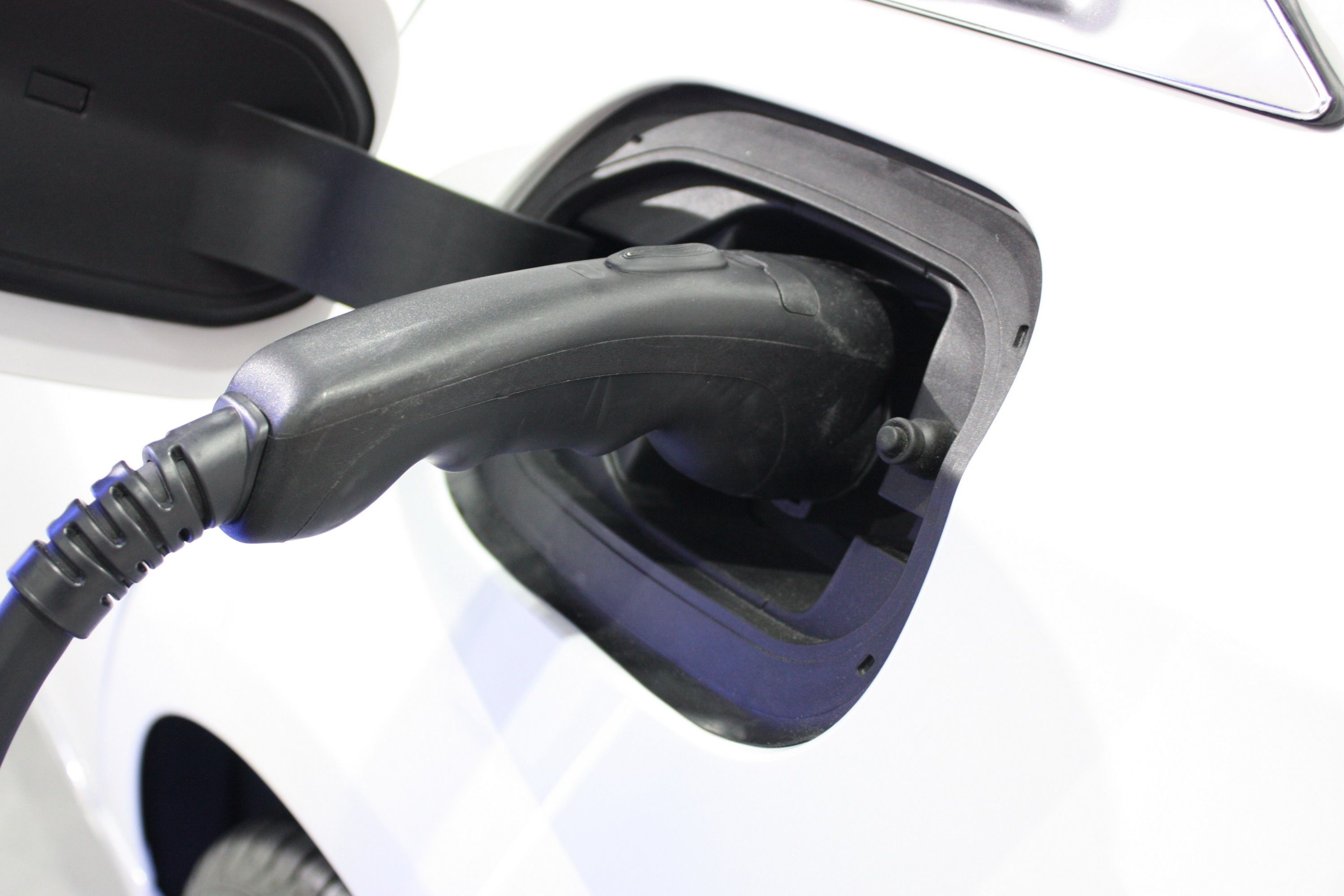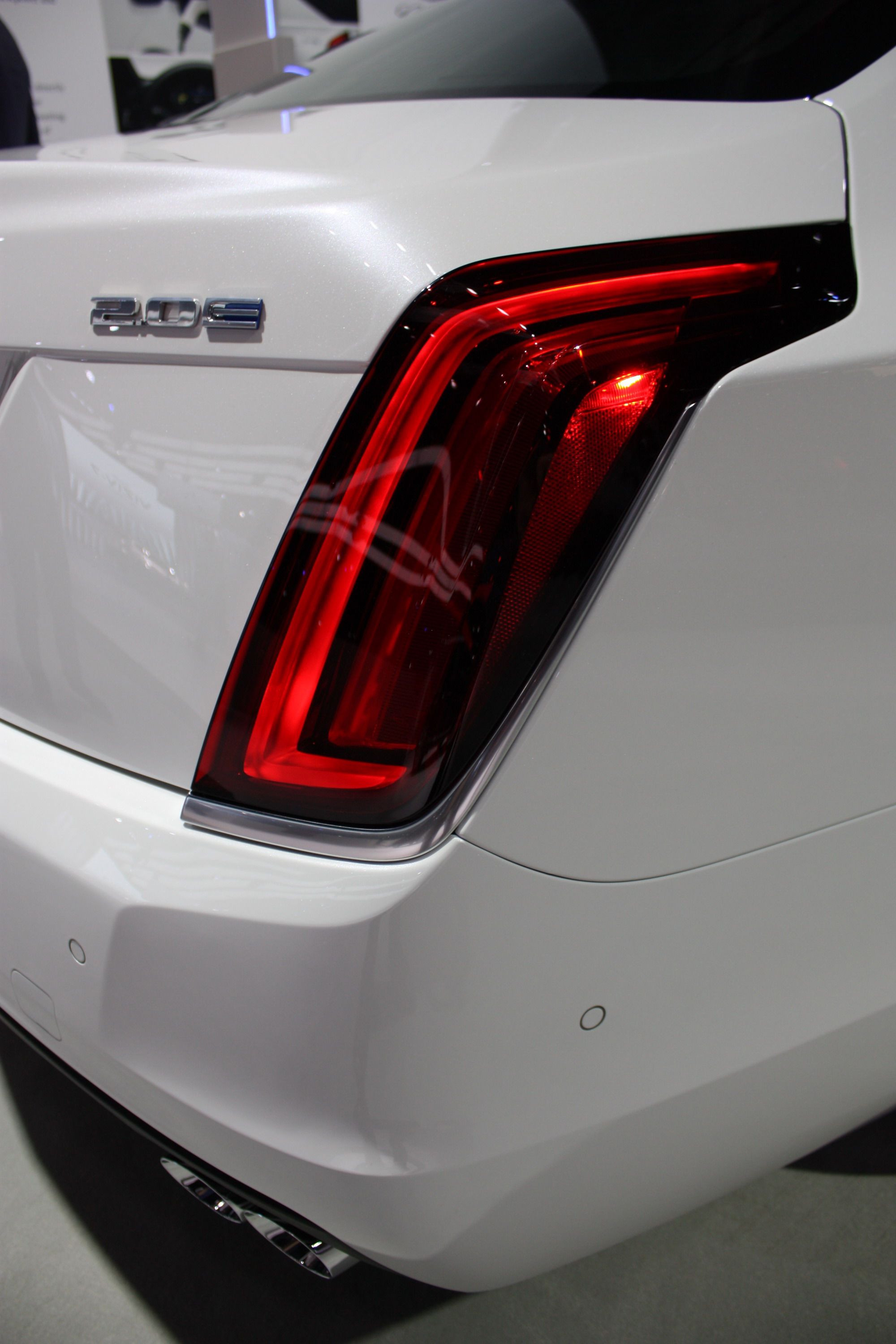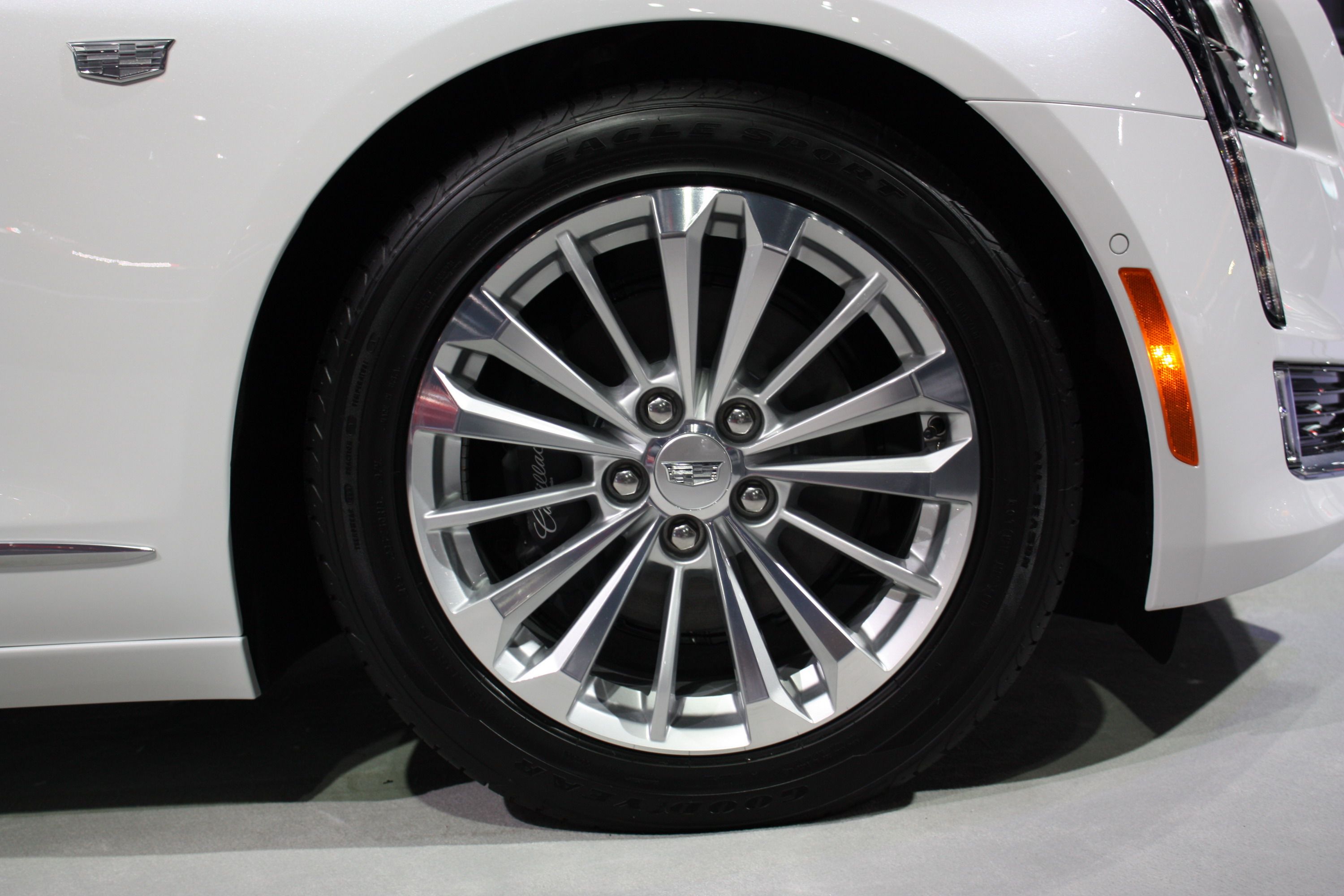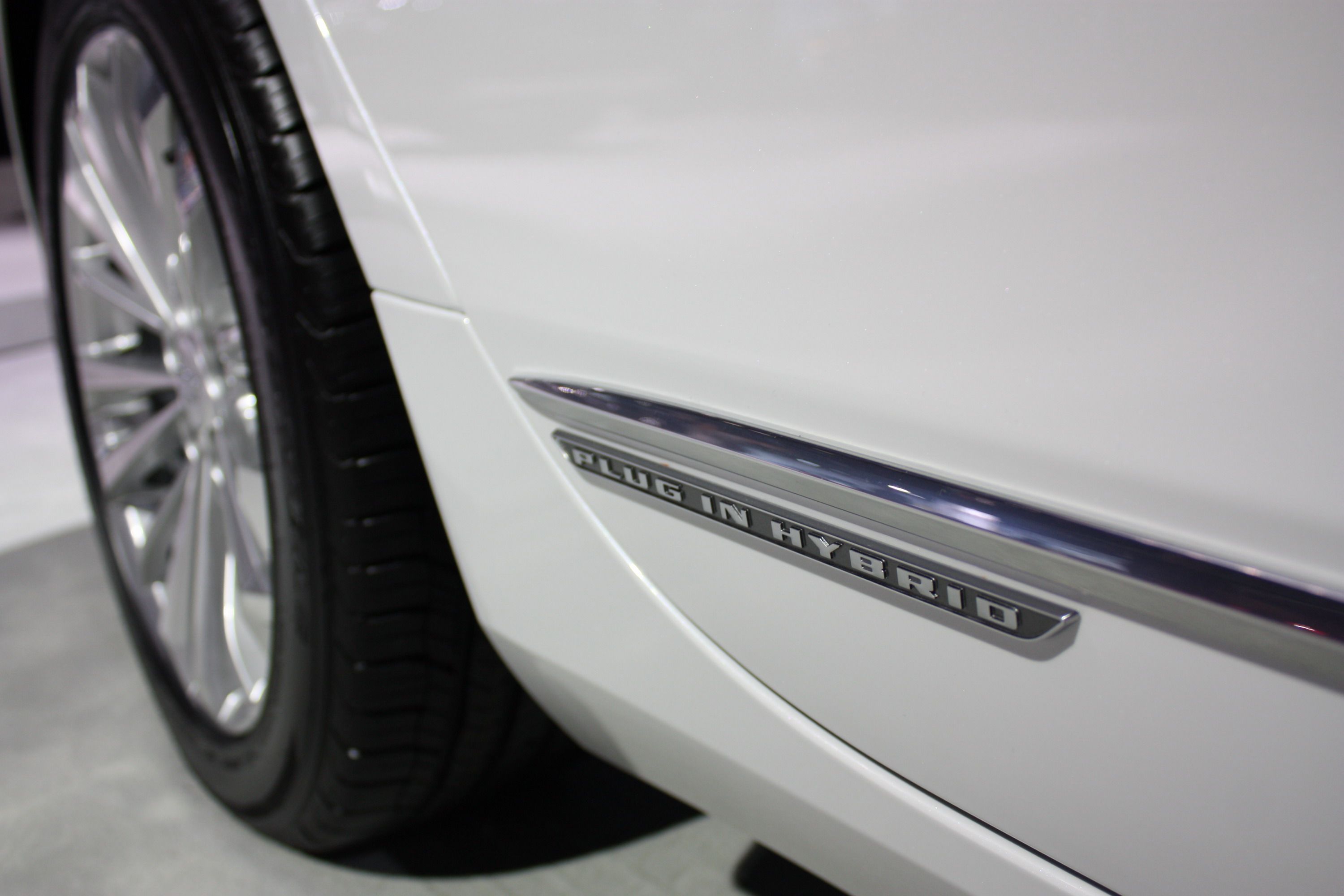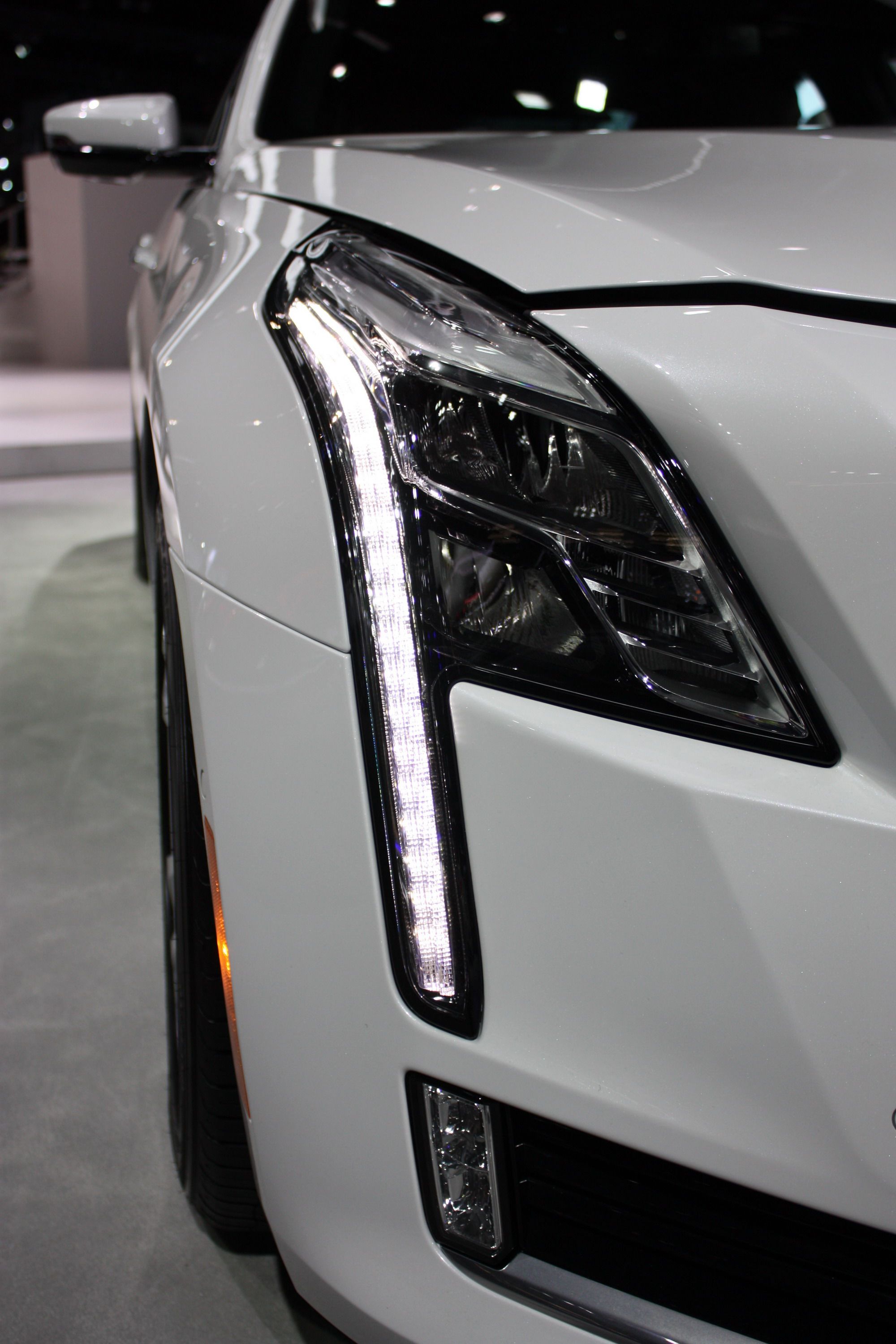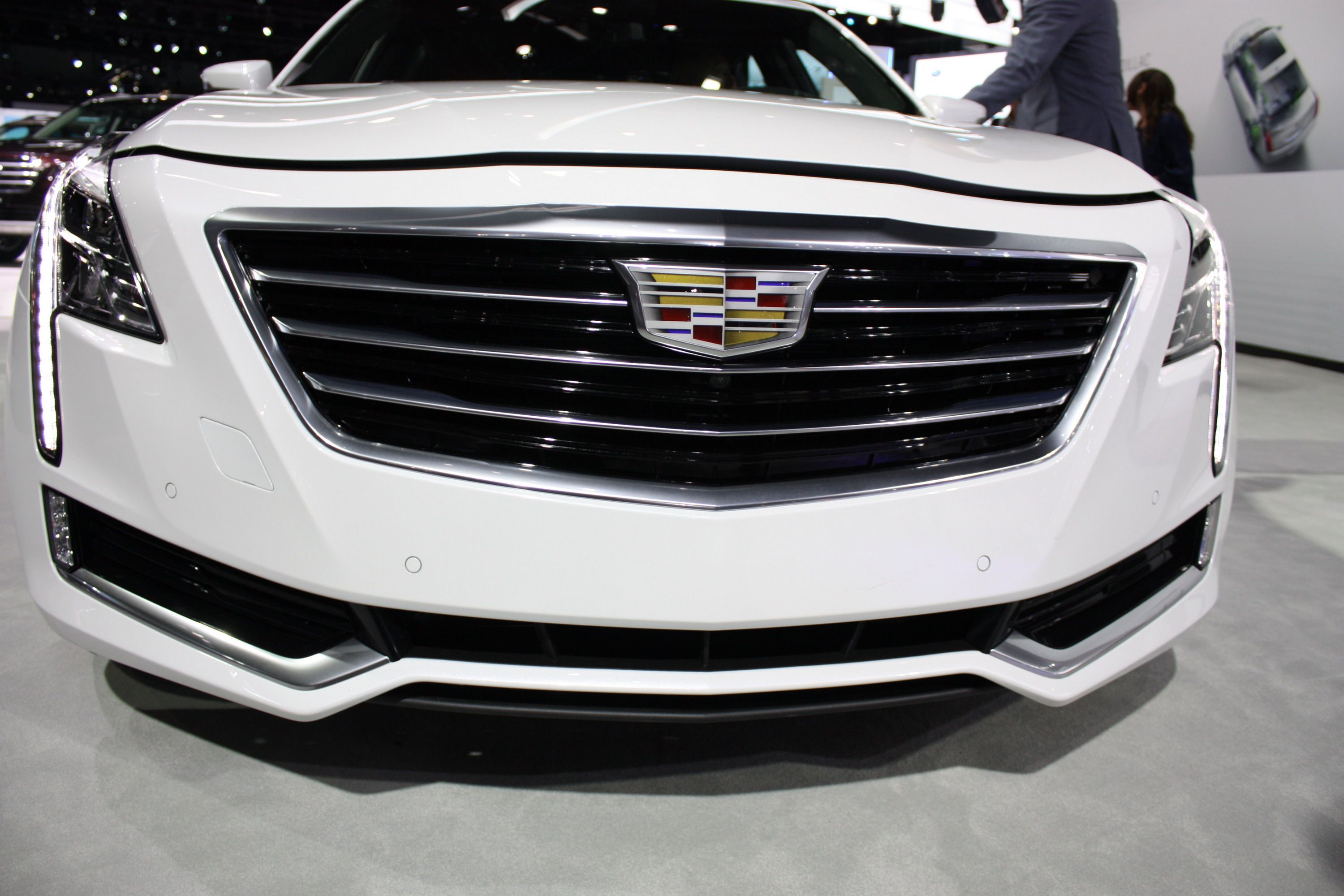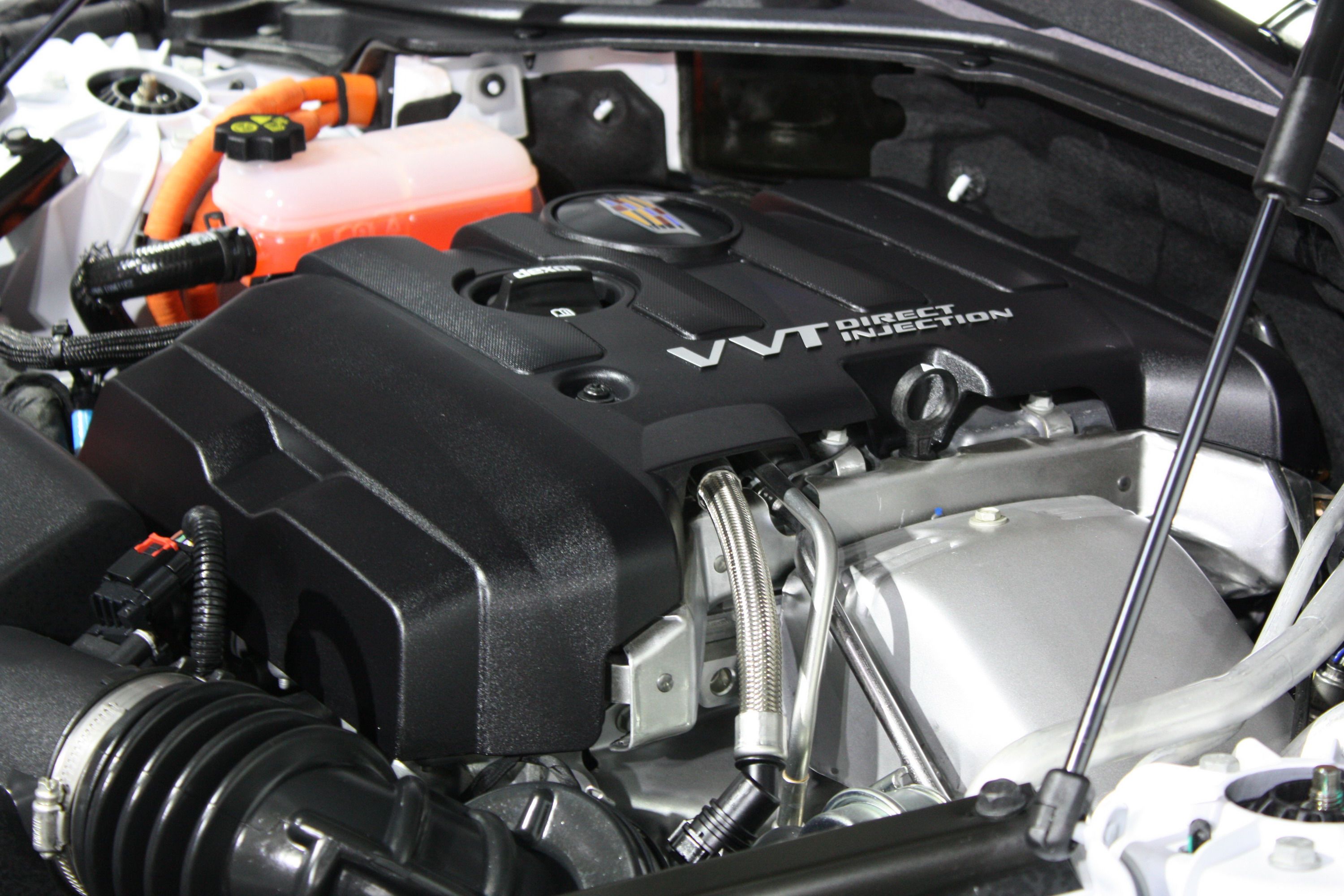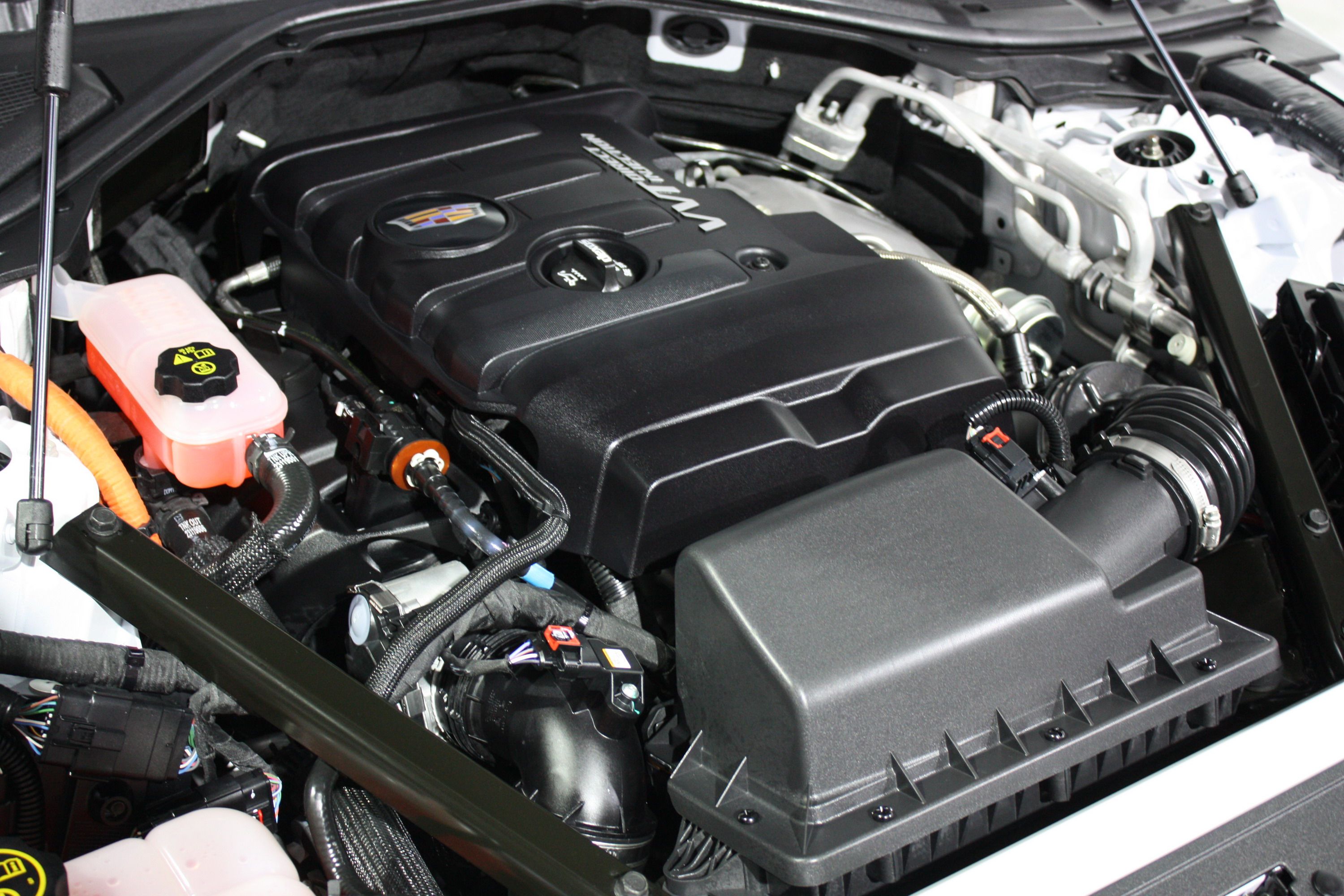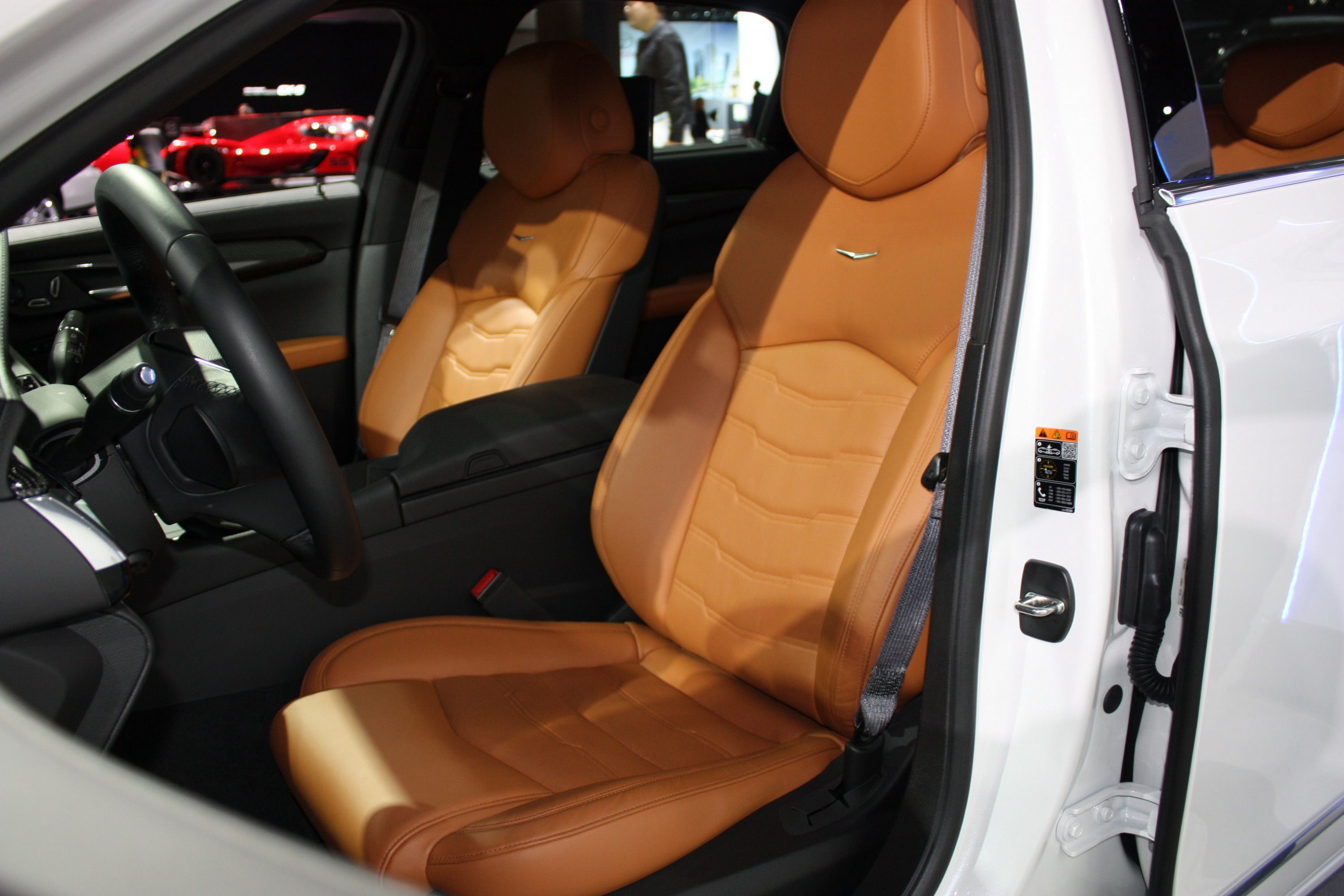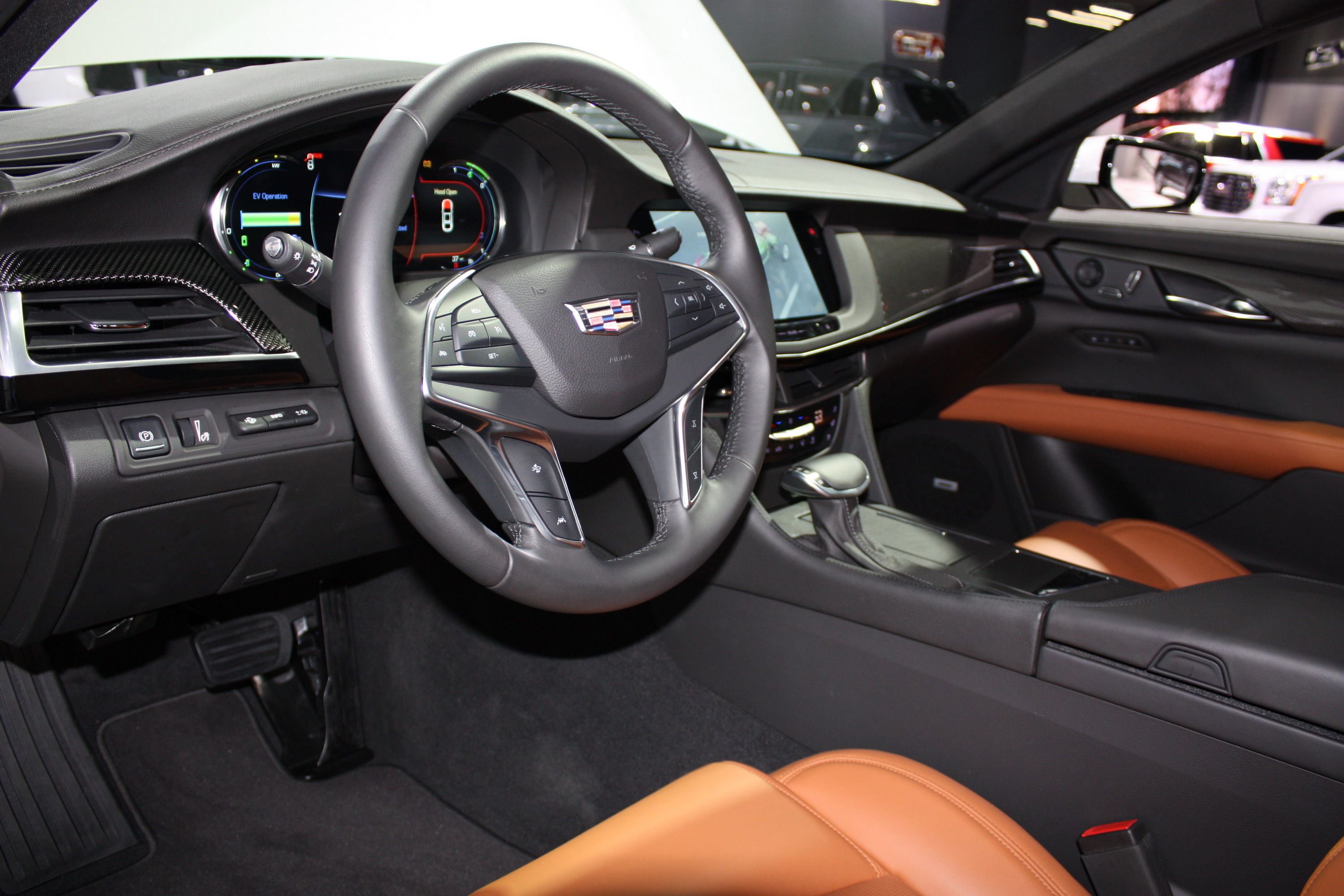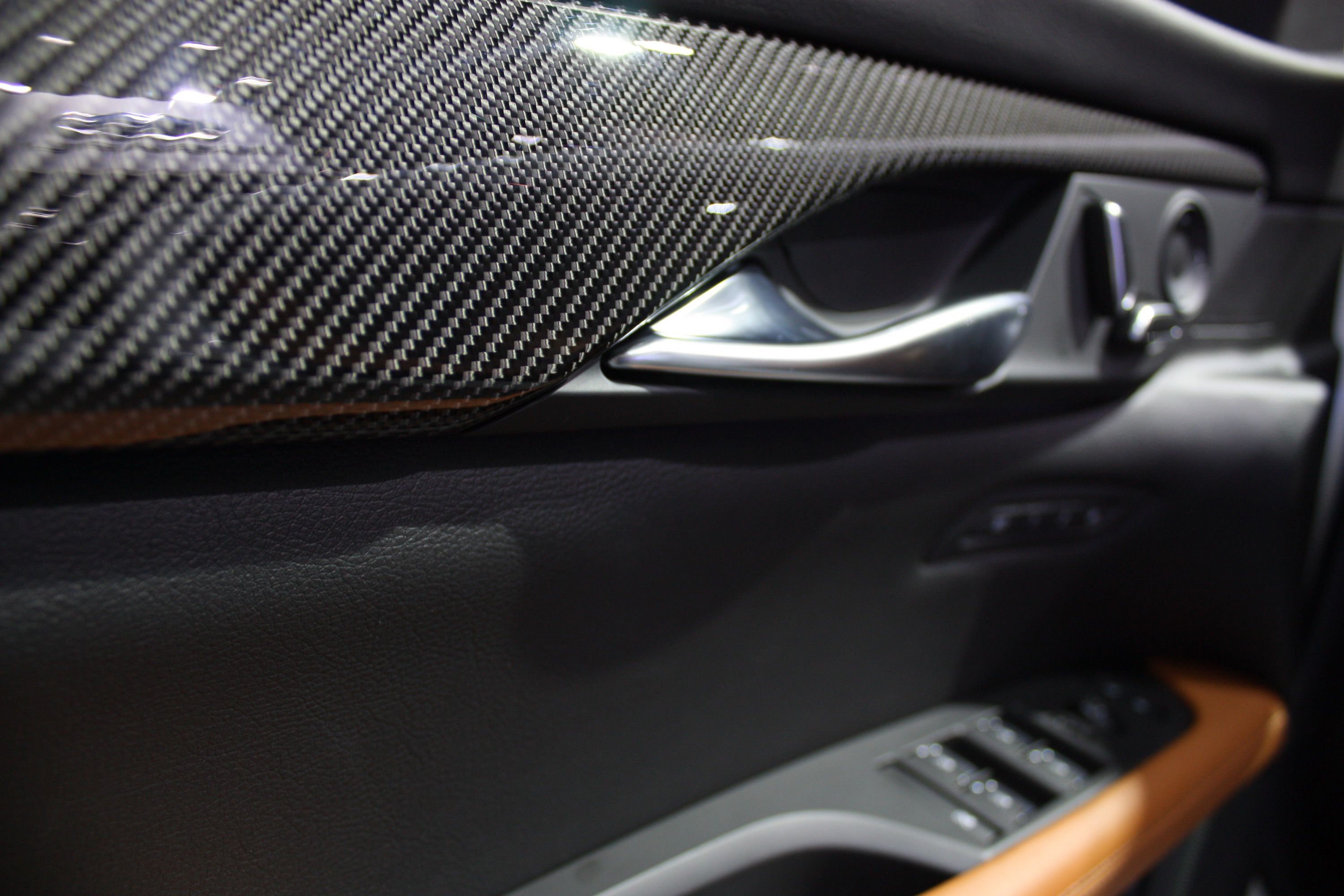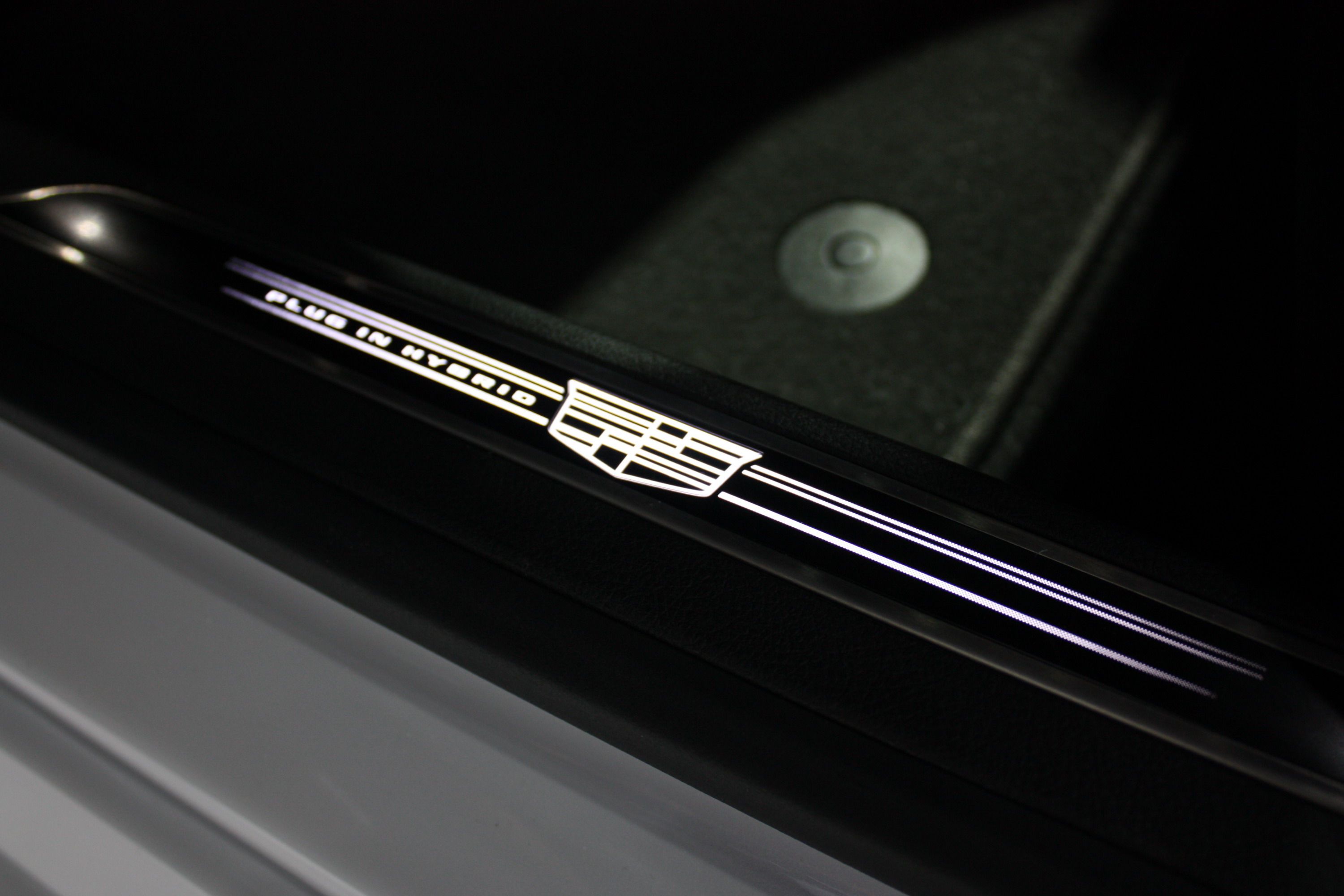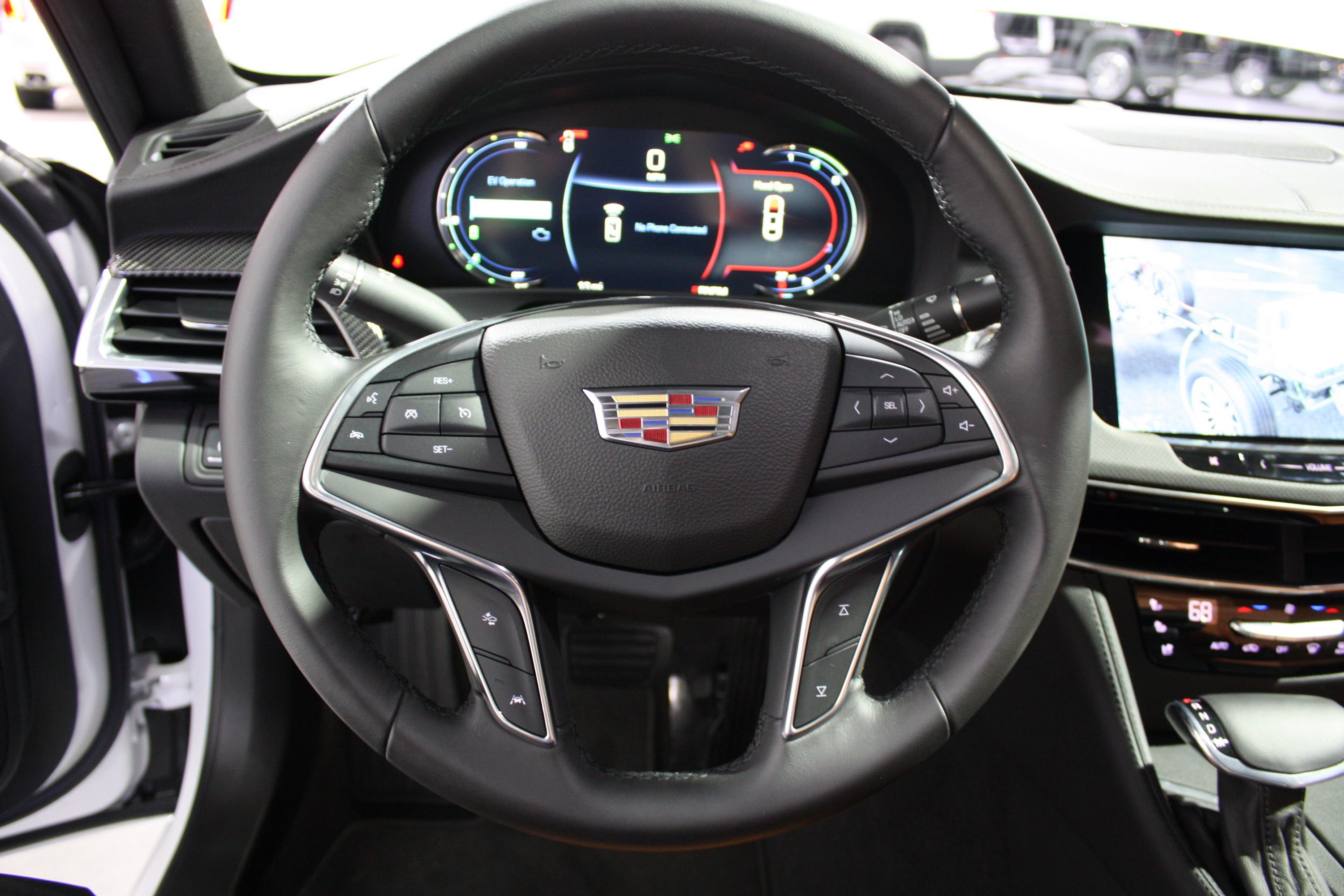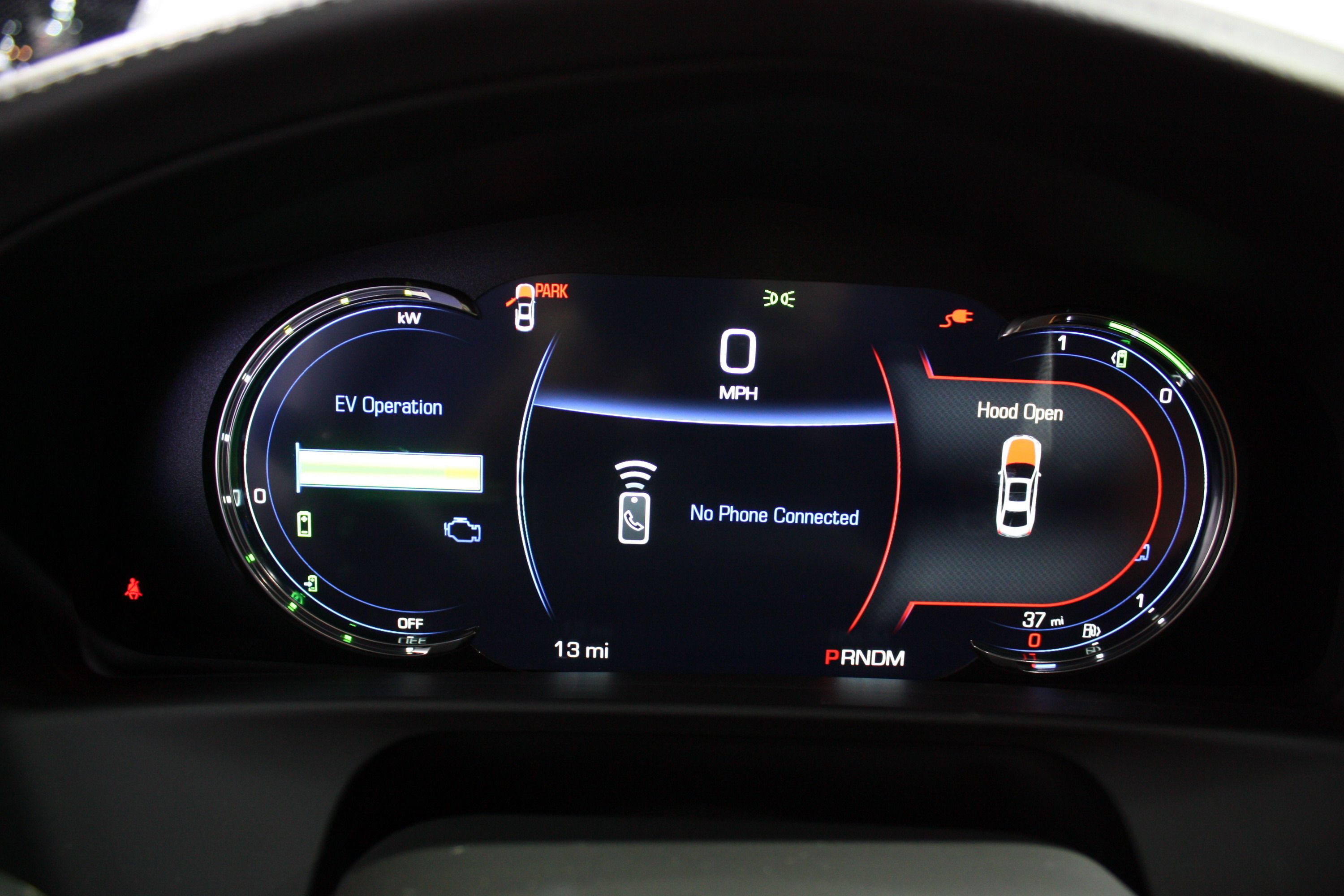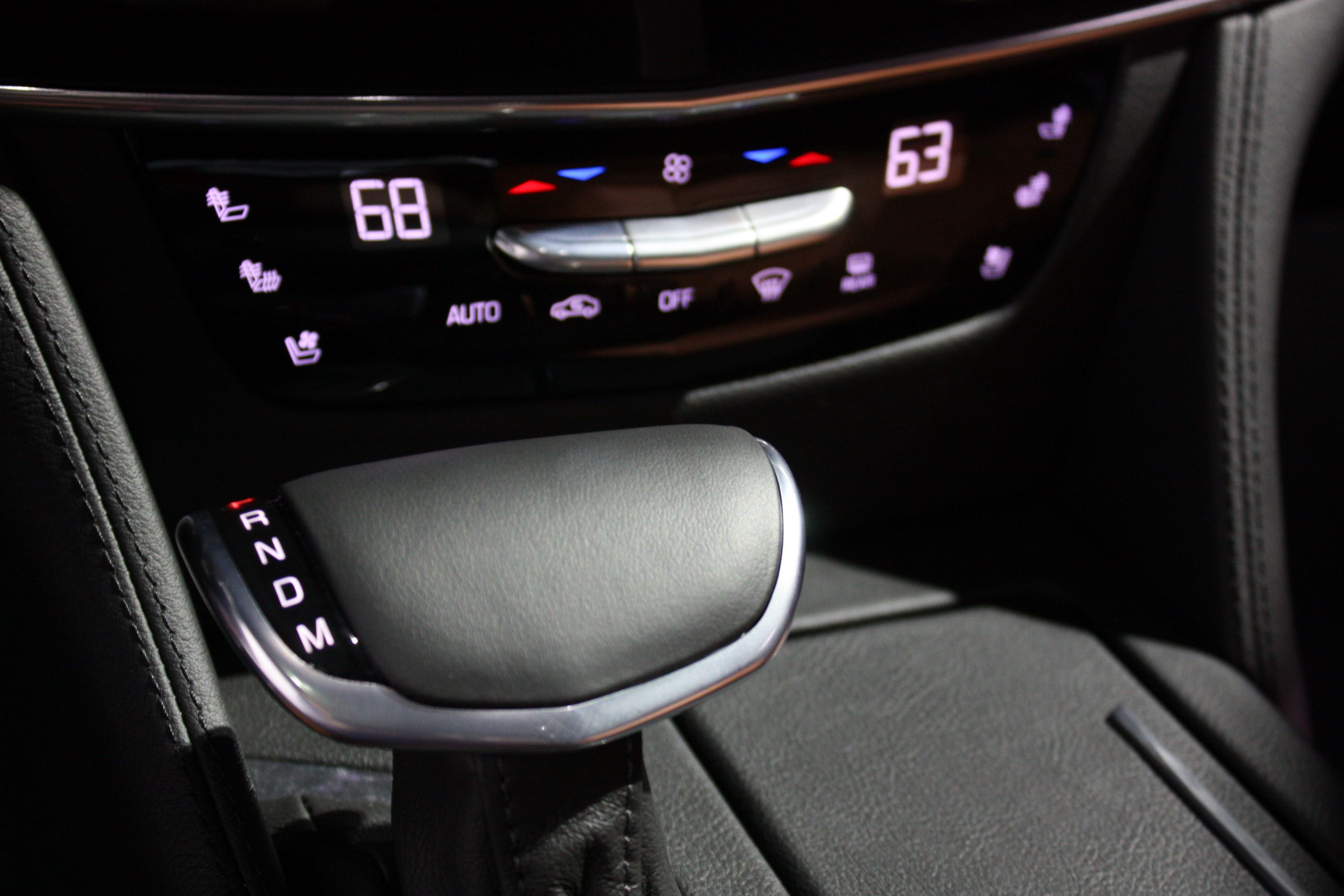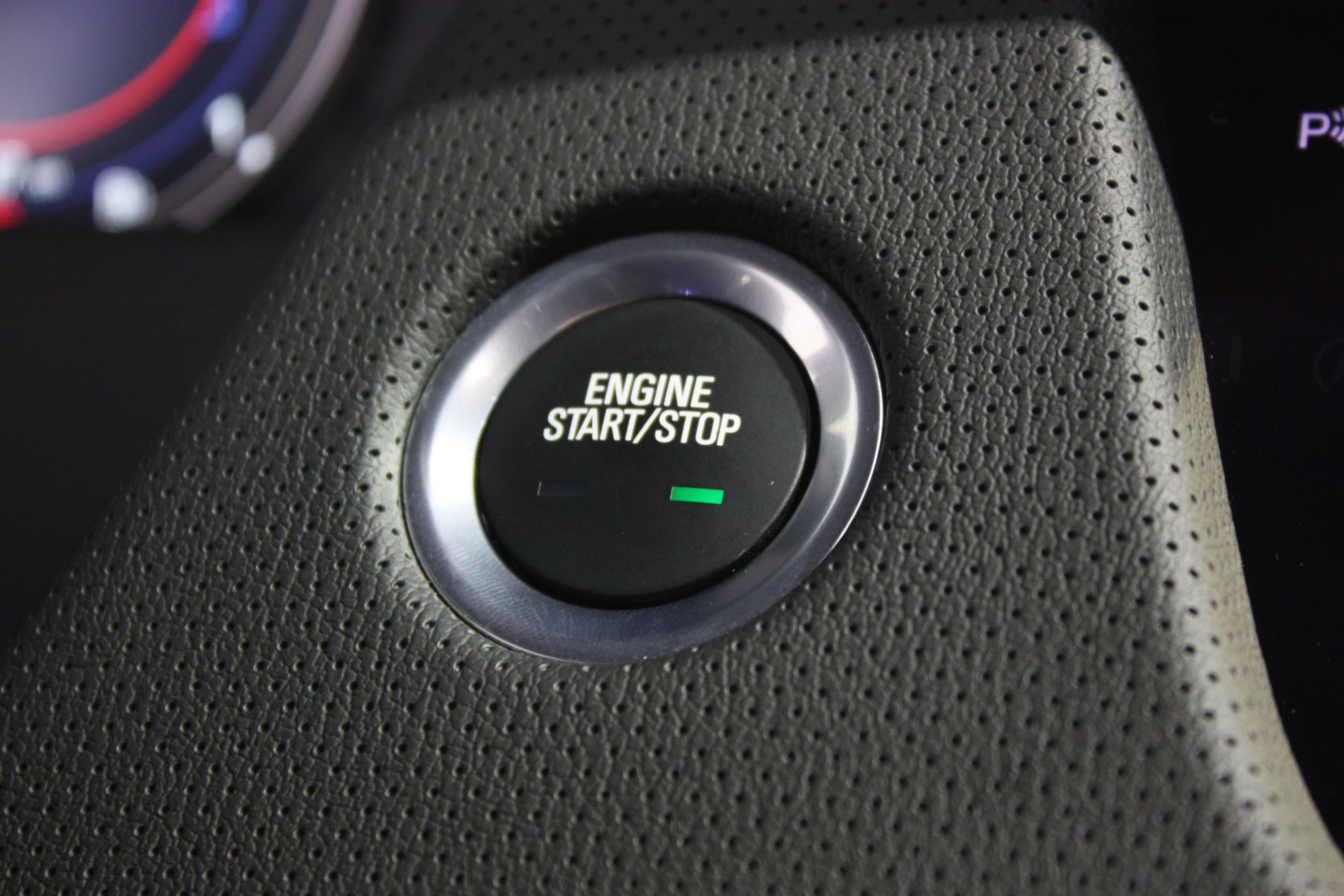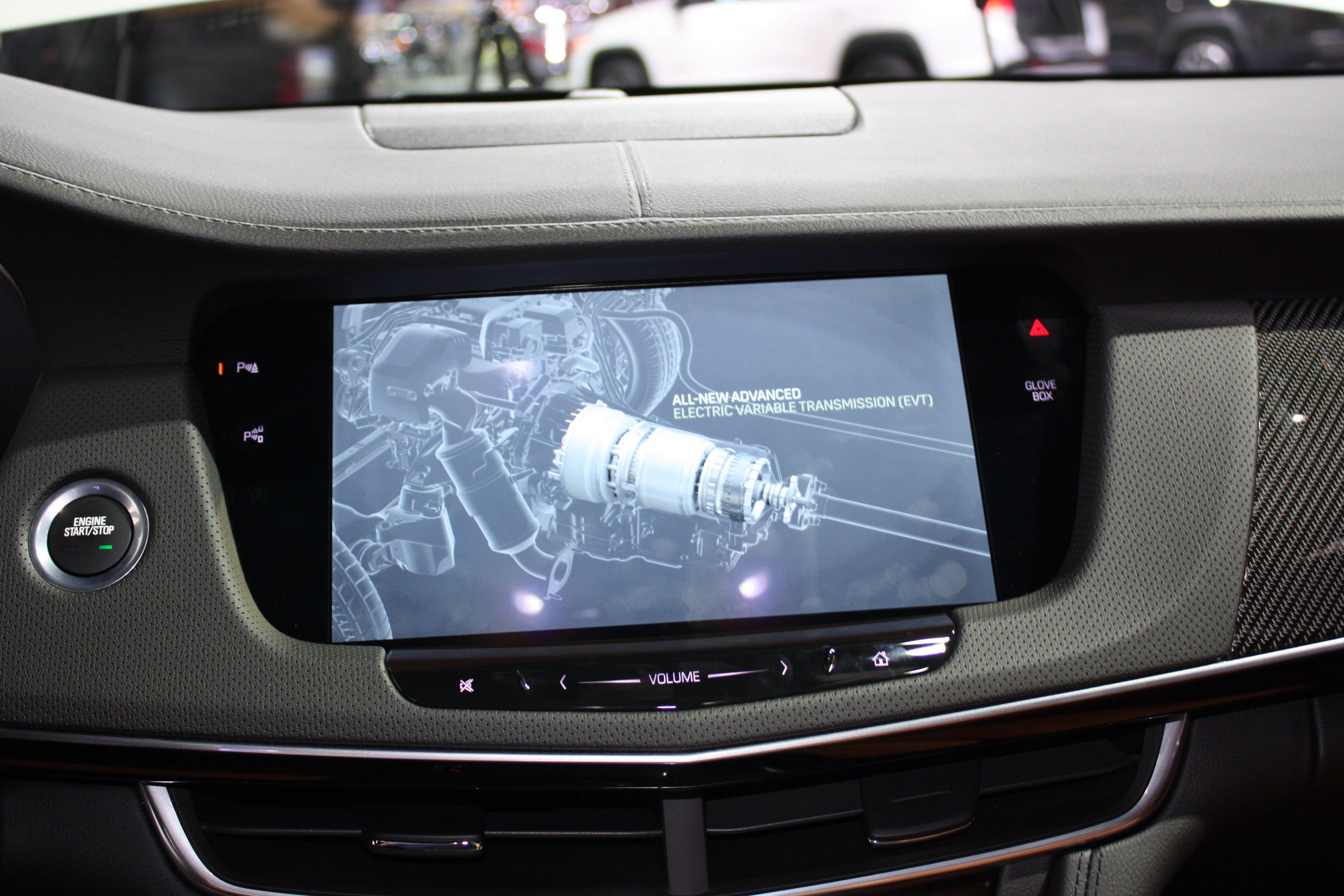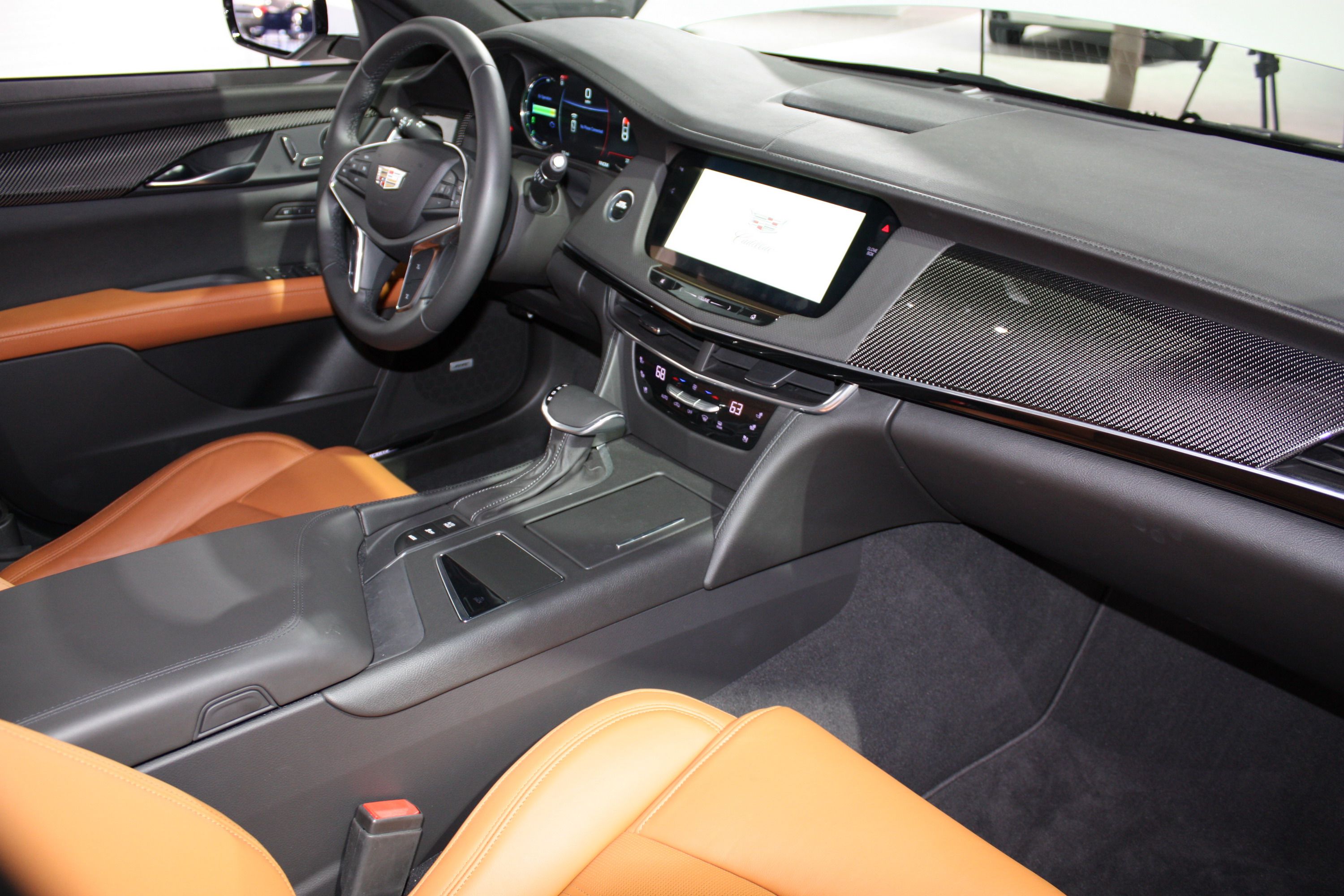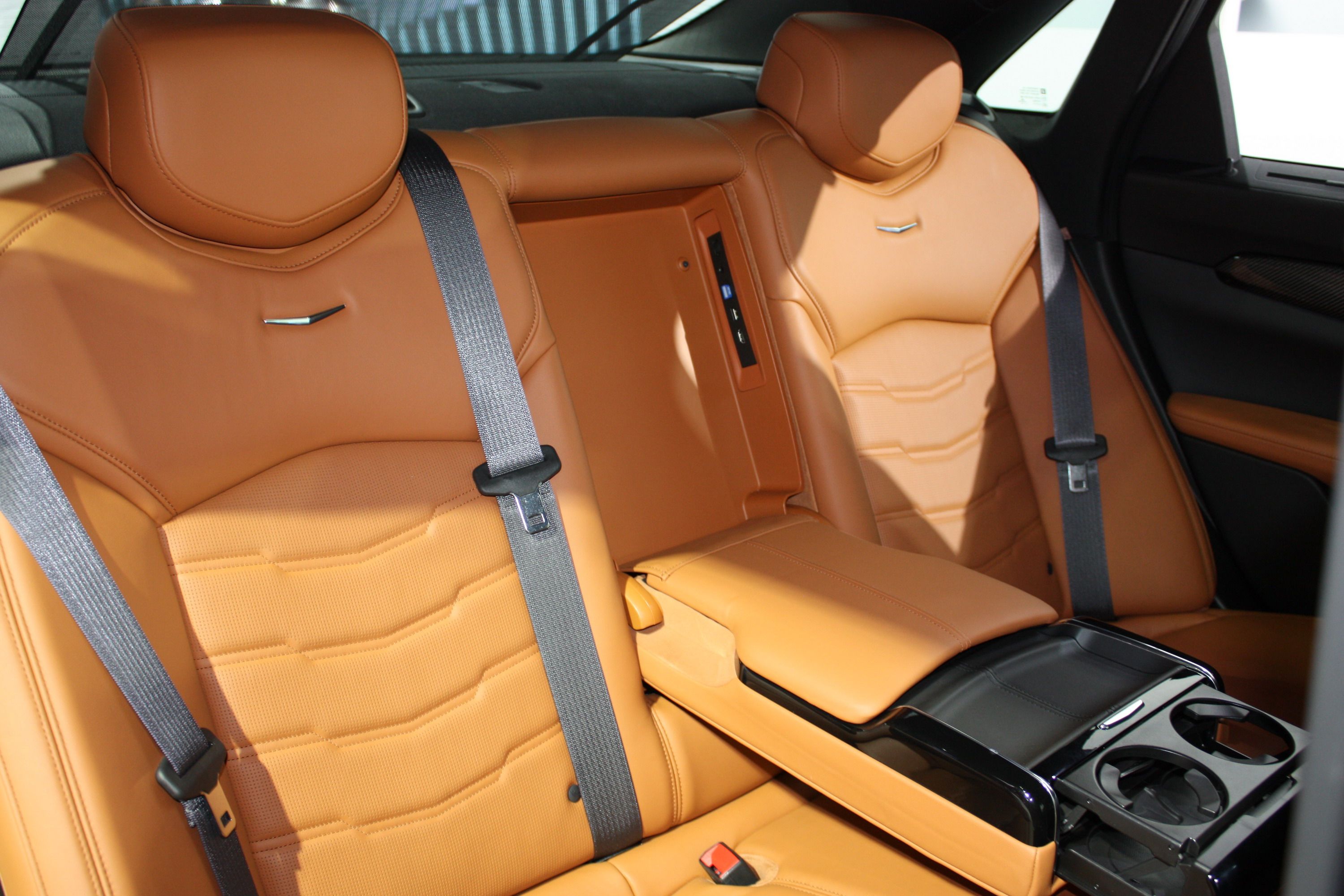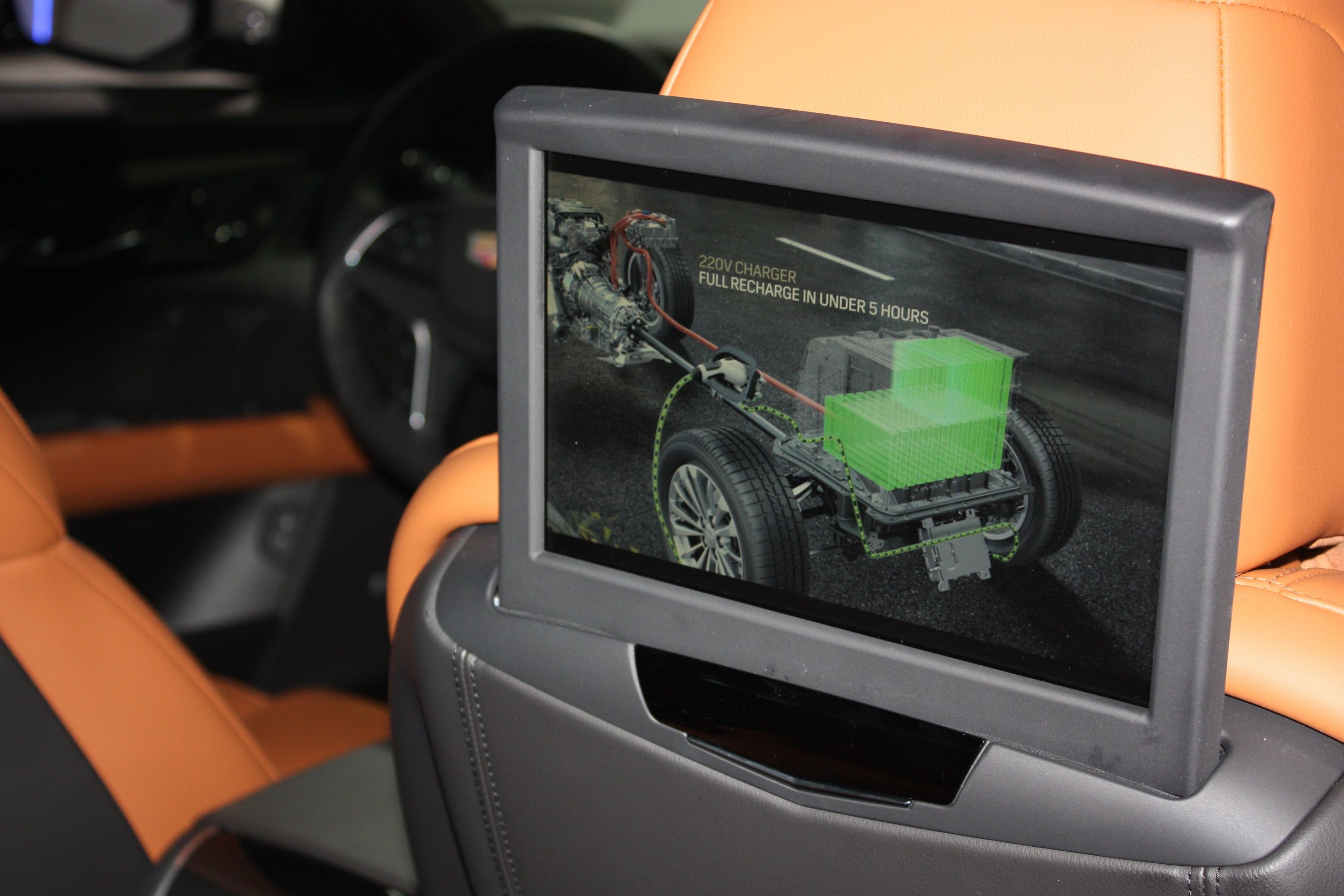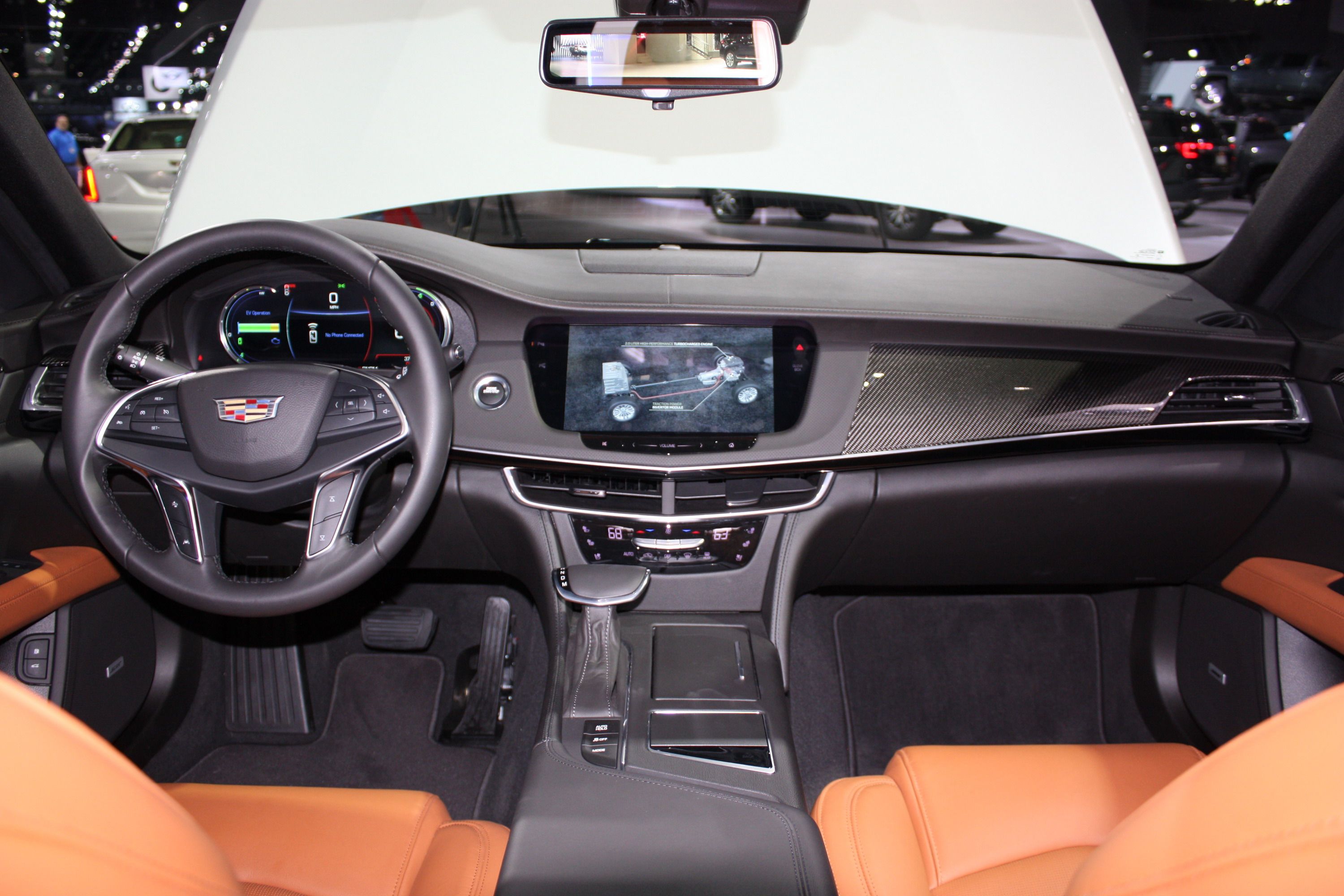A few years ago, GM decided that Cadillac needs a makeover and brought new staff to the brand, which devised a new strategy that included several new models. One of them if the CT6, which arrived in early 2016 as Cadillac's flagship vehicle. Placed above the XTS in the lineup, the CT6 is somewhat of a successor to the Fleetwood, which was phased out in 1999. The new sedan is pretty innovative for Cadillac, using a lightweight platfrom and construction that makes the base model weigh as little as 3,657 pounds. On top of that, it is loaded with an impressive amount of convenience features, as well as enough state-of-the-art tech to give the Mercedes-Benz S-Class and BMW 7 Series a run for their money. For 2017, Cadillac also unveiled a hybrid version of the full-size sedan.
Introduced at the 2016 Los Angeles Auto Show, the CT6 Plug-In Hybrid grants Cadillac access to a tiny niche of full-size sedans using a gasoline and electric drivetrain. Essentially an answer to the Mercedes-Benz S550e Plug-In Hybrid, the CT6 will also compete against the BMW 740e iPerformance, and in some markets the Lexus LS 600h L. Using the same underpinnings and construction as the gasoline CT6, the hybrid arrives as one of the most versatile full-size four-doors, bringing together stout performance, range-topping technology, and unrivaled fuel economy.
“The CT6 is a technological showcase throughout, and by far the lightest car in its class, making it an ideal platform for electrification,” said Cadillac President Johan de Nysschen. “In the CT6, Cadillac presents a new formula for prestige luxury. The advanced Plug-In Hybrid system is a key addition, providing a combination of exceptional fuel economy, crisp acceleration and strong electric-driving range.”
De Nysschen's statement may sound like yet another dose of solid PR, but it's not. There's a lot of truth in there, and I'll explain why in the review below.
Continue reading to learn more about the Cadillac CT6 Plug-In Hybrid.
2017 Cadillac CT6 Plug-In Hybrid
- Make: Array
- Model: 2017 Cadillac CT6 Plug-In Hybrid
- [do not use] Vehicle Model: Array
Exterior
Much like all hybrid cars that are part of a larger family that includes conventional models too, the CT6 Plug-In Hybrid is virtually identical to its gasoline-powered siblings on the outside. There are only two features that reveal its hybrid identity, one being the extra "fuel" cap hiding the plug-in socket on the left rear fender and the second being the little blue insert on the "2.0" badge on the trunklid. Other than that, this sedan is like any other CT6 on the road.
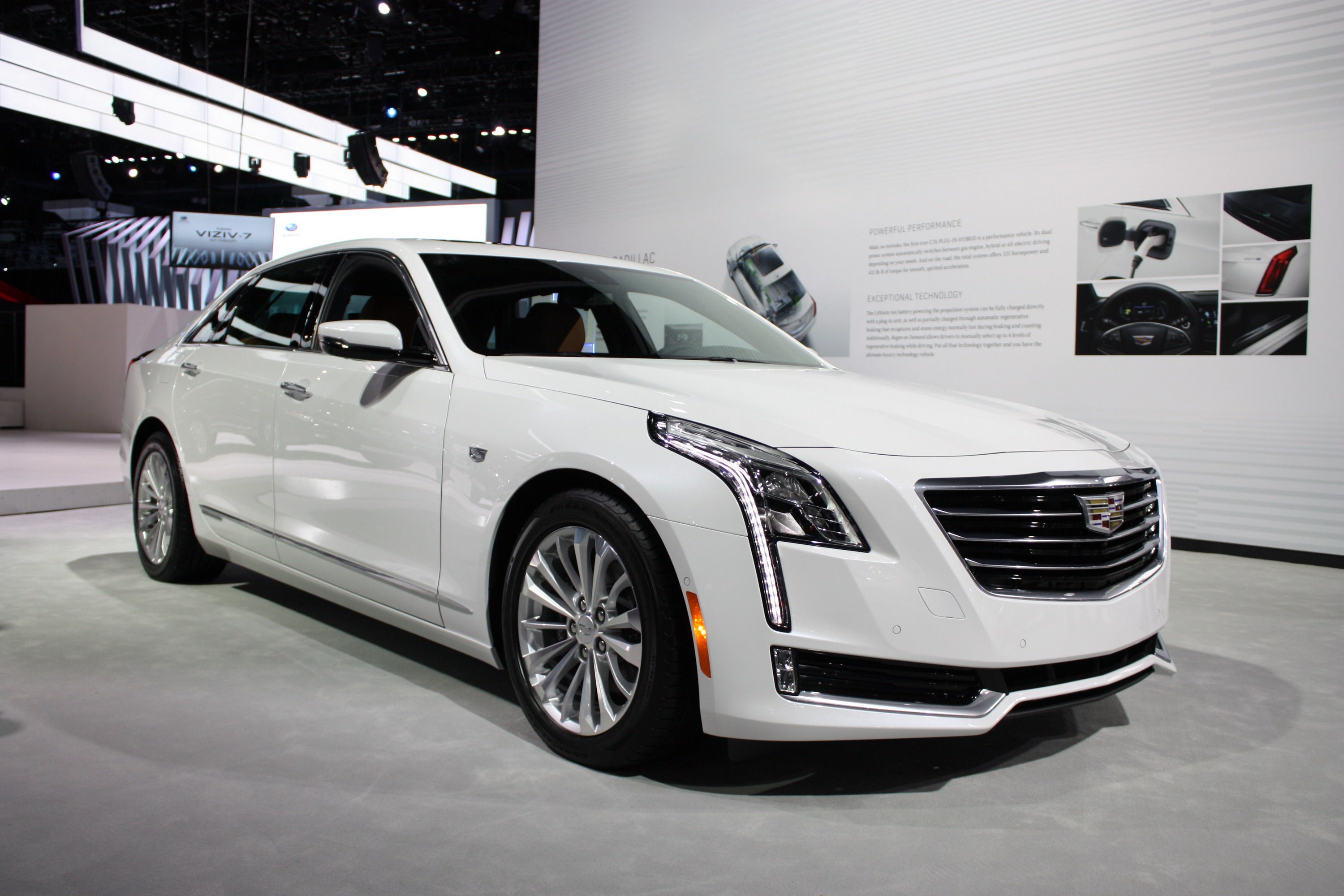
|
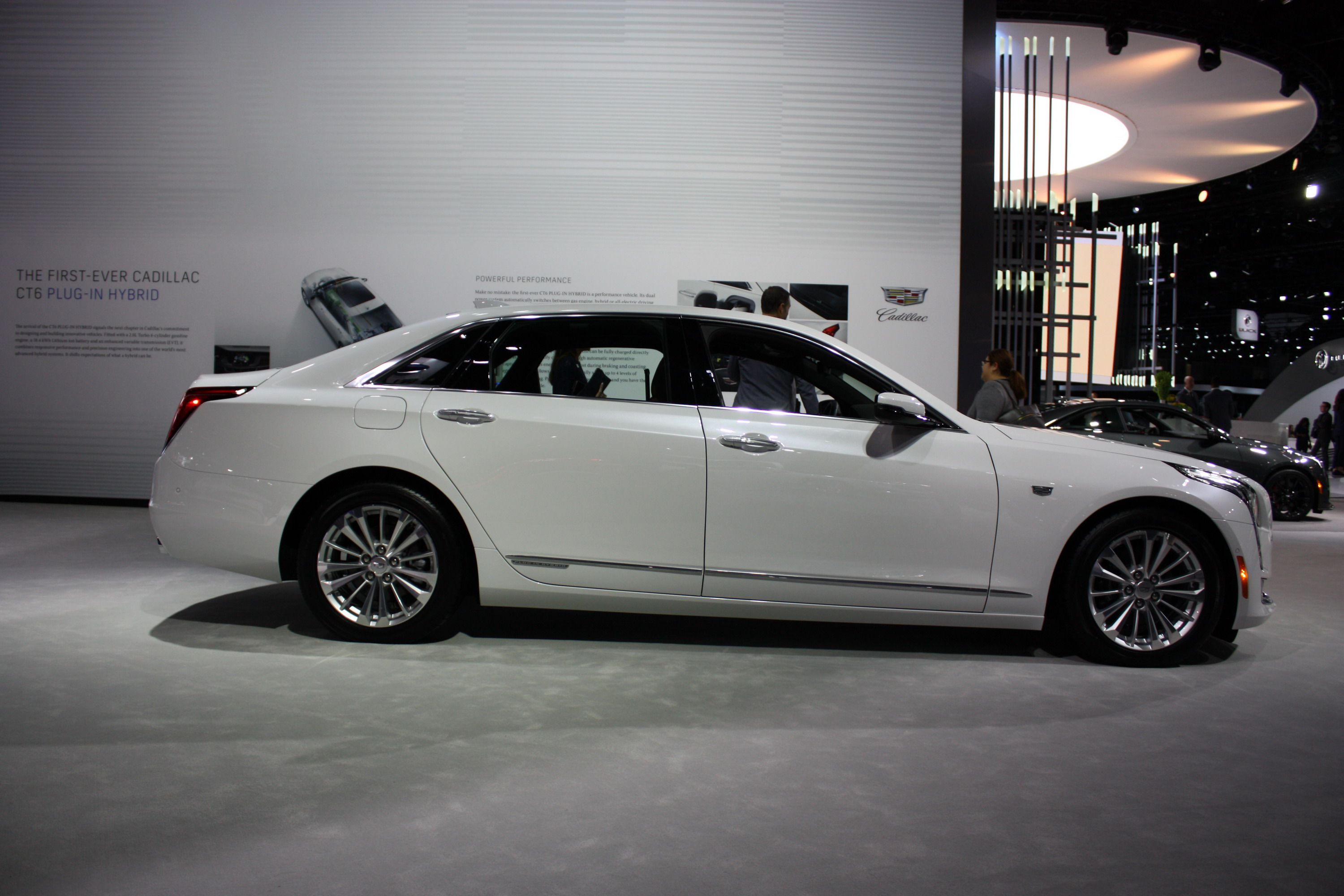
|
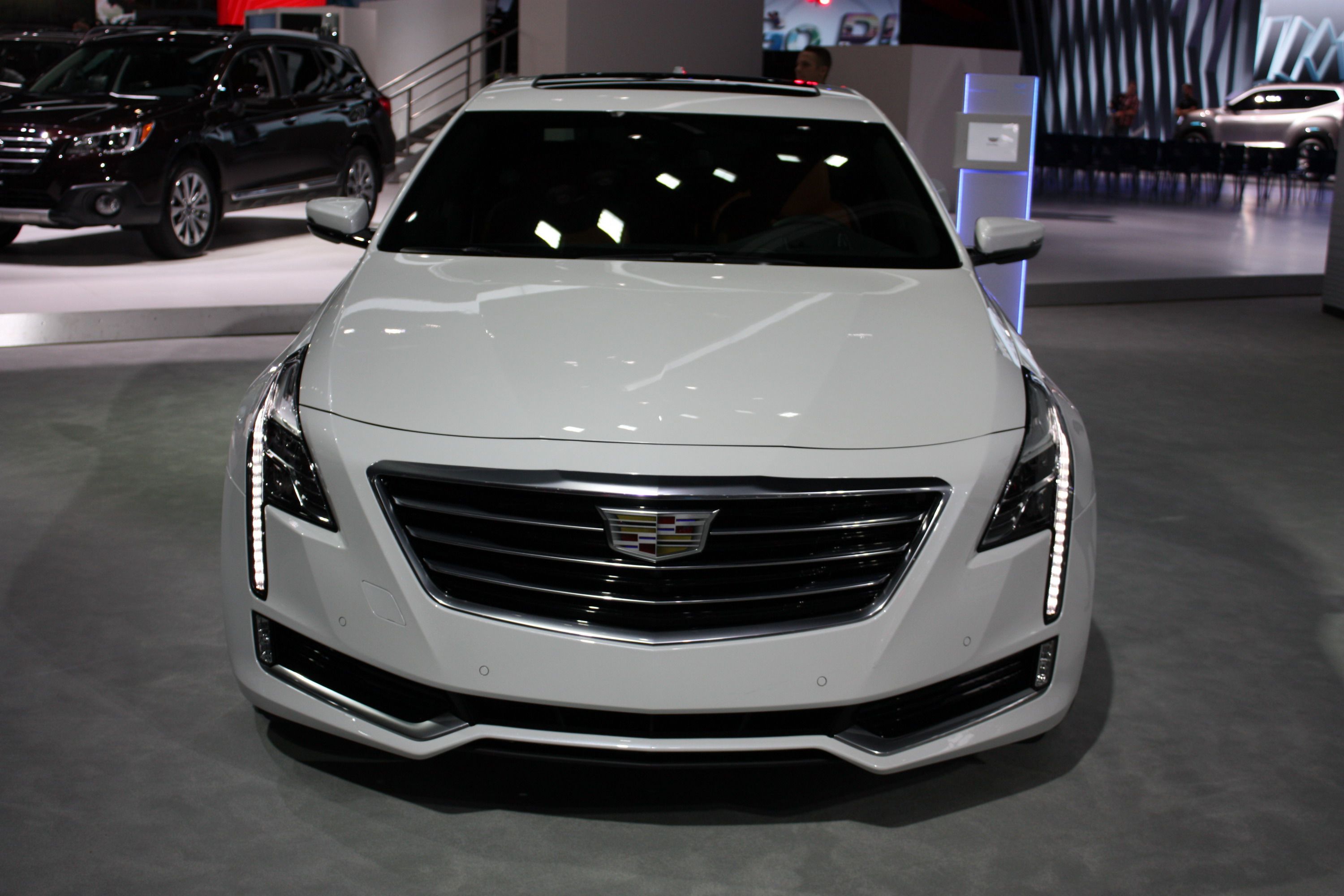
|
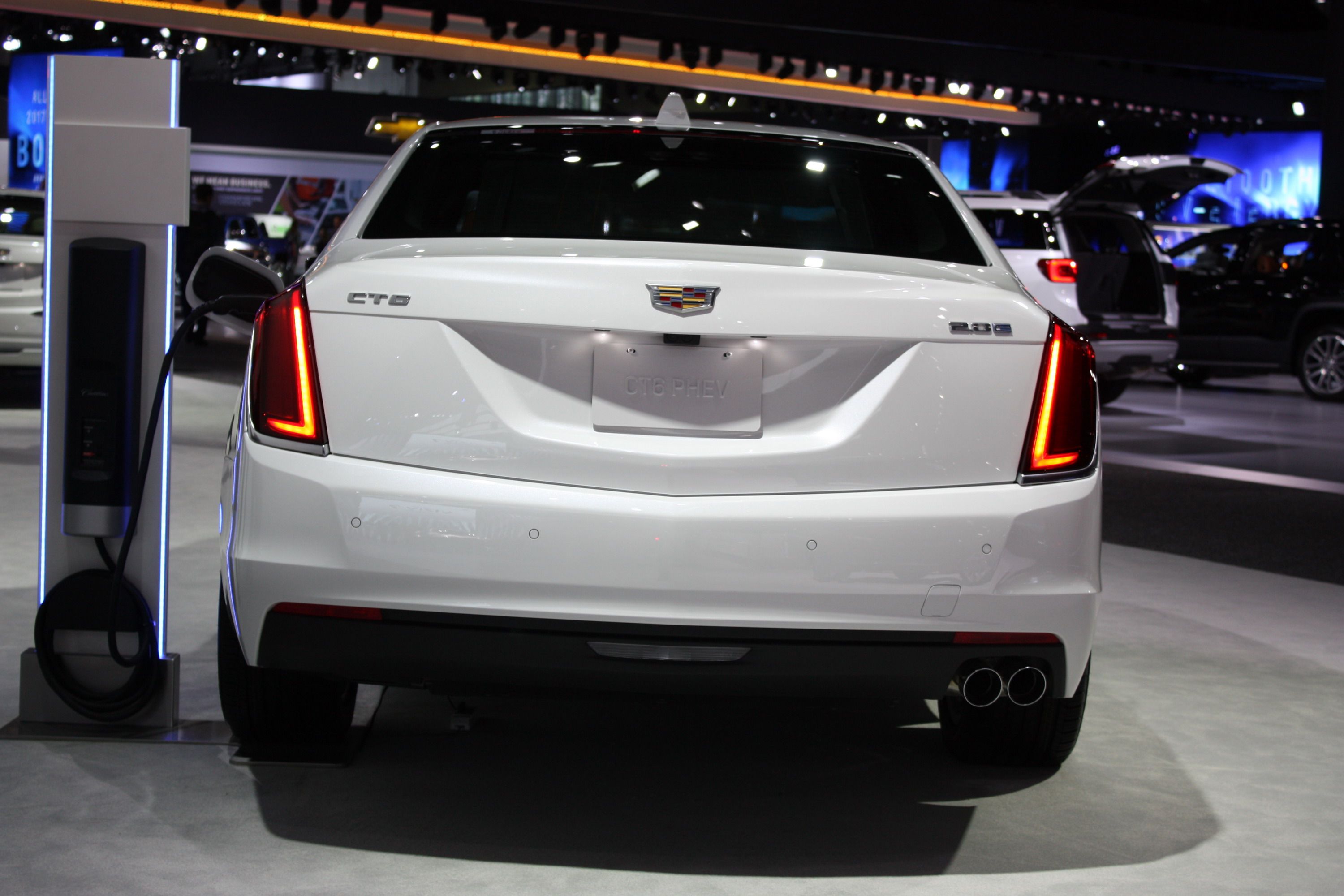
|
As you may remember, Cadillac rolled the CT6 out for the 2016 model. It's the company's largest modern vehicle, being 204 inches long, 74 inches wide, and having a 122.4-inch wheelbase. The styling is an evolutionary progression of the "Art and Science" theme of the smaller CTS and ATS models, but with more emphasis on elegance. The vertical headlamps, the wide front grille, and tall beltline give the CT6 an imposing look. The clean body panels also help with the graceful appearance that reminds of classic Eldorados from the 1960s and 1970s.
Please excuse the hybrid vs gas-guzzler comparison...
COMPETING DESIGNS
The CT6's primary competitor is the W222-generation Mercedes-Benz S-Class (left). Launched in 2013, the limousine introduced a new design language that was sporty and elegant at the same time. The new S-Class has received positive reviews as far as styling goes, and its design also inspired the smaller E-Class and C-Class. Compared to the CT6, the S-Class has a more aggressive stance, while the wide and heavily chromed front grille gives it the massive appearance American customers are looking for in a full-size four door. You really can't go wrong with the Merc, especially if you're looking for a tried-and-true layout that harkens back to classic S-Class models.
The CT6 Hybrid's second competitor also comes from Germany, as the BMW 7 Series (right). Introduced in 2015 in its sixth generation (called the G11) the new sedan gained a new design language that is as imposing as the S-Class'. However, unlike the Merc, the new 7 Series has a less revolutionary appearance, with most of its features heavily based on the previous car. That's not a bad thing though, as BMW fixed most of the less impressive cues of the outgoing model, while adding a sporty bumpers and a muscular hood. All told, if you're looking for more sportiness in your limousine's design, the 7 Series might be a better option.
Interior
The same goes for the cabin, which is again identical to that of the conventional CT6, but it's worth noting that the Plug-In Hybrid comes with the equipment of the Premium Luxury trim, the second highest model within the range. Premium Luxury boasts a comprehensive list of standard features, including a 10.2-inch touchscreen for the CUE infotainment system, navigation, a Bose sound system with 10 speakers, Apple CarPlay integration, and three USB ports. There's also SiriusXM Satellite Radio, Bluetooth, and OnStar with 4G LTE.
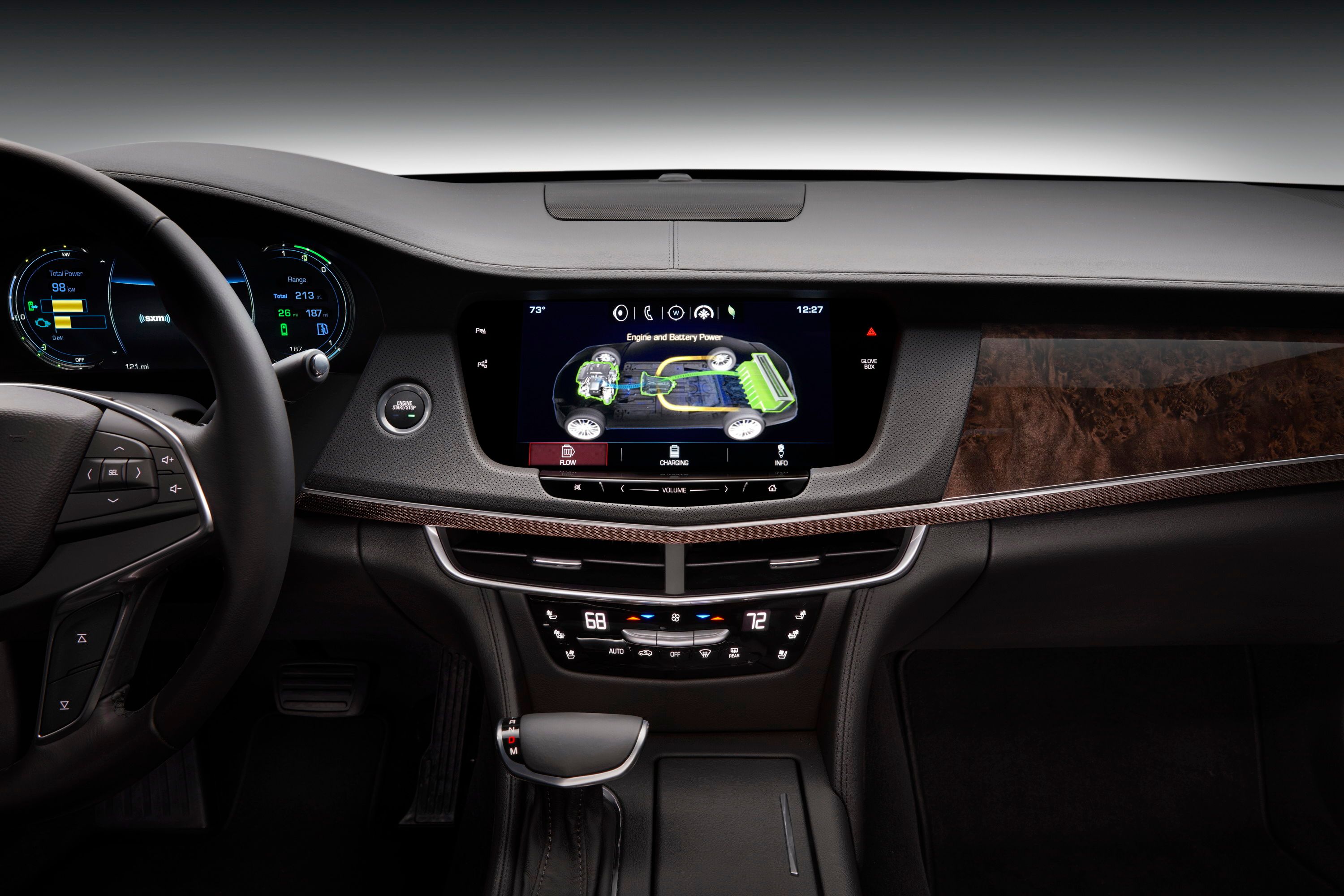
|
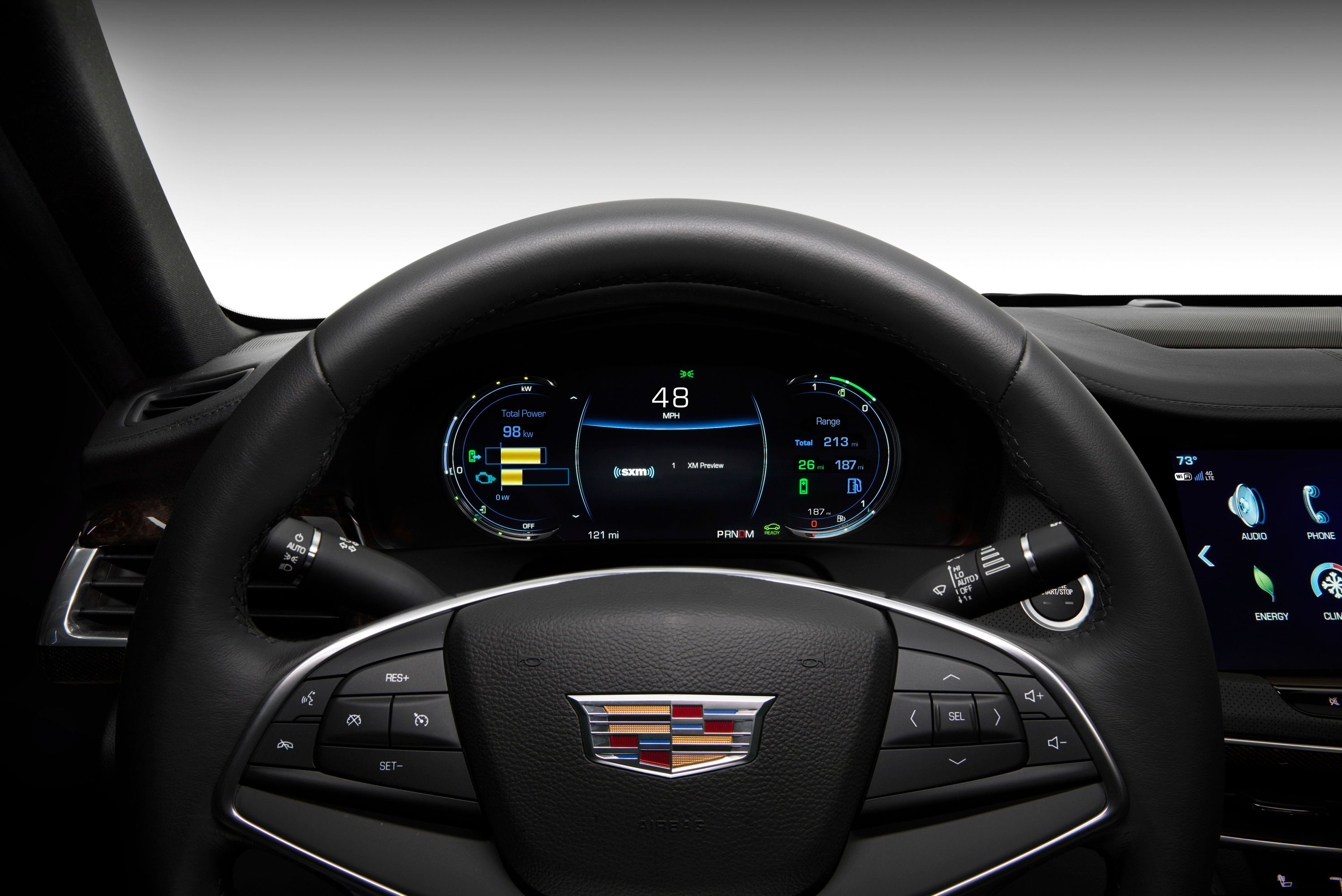
|
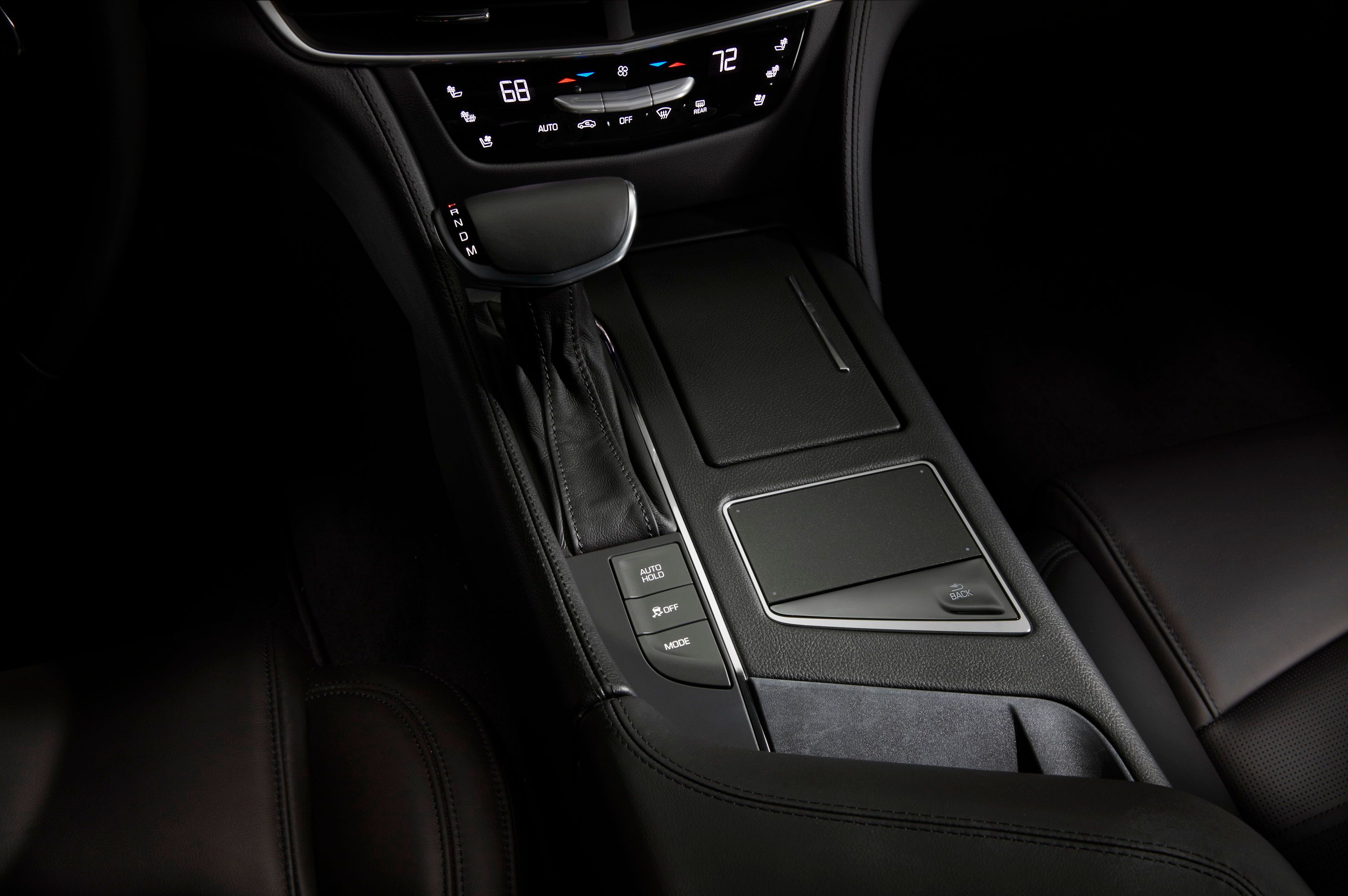
|
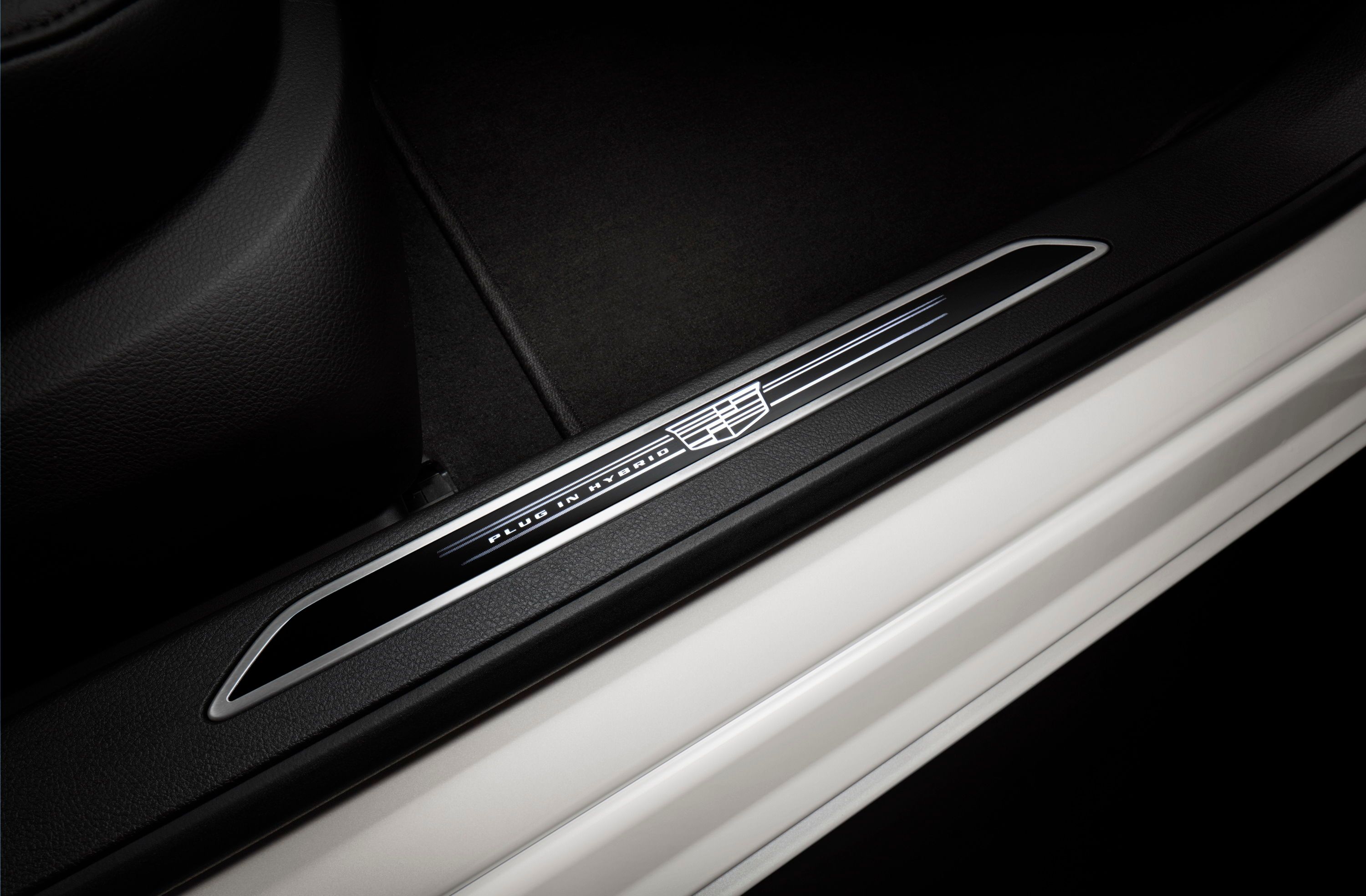
|
The front seats are heated, 16-way adjustable, and have memory functions, while the steering wheel is also heated and wrapped in leather. There's premium carpet and floor mats in the front and rear, while both the digital instrument cluster and head-up display are reconfigurable. Other features include tilt and telescoping steering column, wireless charging, cruise control, and inclination sensor. This trim also comes with the Enhanced Vision and Comfort Package, which adds rear camera mirror, UltraView panoramic sunroof, ventilated driver and front passenger seats, and heated rear seats. Optionally, customers can select the rear-seat infotainment system and Enhanced Night Vision.
COMPETING EQUIPMENT AND FEATURES
Large Mercedes-Benz sedans are usually well equipped, and the S550 Plug-In Hybrid (left) is no exception. The standard features list is quite big and includes heated, 16-way power front seats, multicolor LED ambient lighting, Air Balance cabin fragrance system, leather upholstery, soft-close doors, dual-zone climate control, and power rear-window sunshade. Optionally, you can add active multicontour front seats with massage function and ventilation, heated and ventilated rear seats, heated steering wheel and armrests. It's worth noting that the CT6 gets heated steering wheel and rear seats as standard features. Other goodies you can add on the Merc at extra cost include executive right rear seat, exclusive Nappa leather upholstery, multicontour rear seats with massage, and four-zone automatic climate control.
Moving over to the BMW 7 Series (right), it also comes with a comprehensive package, but compared to the CT6 and S-Class, it will leave you wanting more. The standard front seats have a four-way lumbar support and memory system, but they're only 10-way adjustable, meaning you are more likely to find a comfortable position in the Caddy and Merc. On the other hand, the fine leather upholstery, high-gloss wood trim, and brushed aluminum inserts are on par with what you get from the competition. The 7 Series also features a leather-wrapped steering wheel, iDrive infotainment, BMW Navigation with 10.2-inch display, a 12.3-inch digital instrument cluster, and gesture control.
Drivetrain
Unlike the base CT6, the Plug-In Hybrid uses two electric motors in addition to the turbocharged, 2.0-liter four-cylinder gasoline engine. Each motor produces 100 horsepower, while the total system output is rated at 335 horsepower 432 pound-feet of torque. That's 70 horses more compared to the base model and as much as the sedan powered by the 3.6-liter V-6. As far as torque goes, the hybrid generates more than the range-topping CT6, which gets 400 pound-feet from a twin-turbo, 3.0-liter V-6.
As far as performance goes, the plug-in hybrid needs only 5.2 seconds to hit 60 mph on its way to a top speed of 150 mph. That's pretty impressive for a vehicle this big!
Moving over to specs that are more important for a hybrid, this CT6 comes with an all-electric range of 30 miles. It might not sound like a lot, but it's s more than what its competitors can deliver. When using the car on electric power alone, top speed drops to 78 mph. The total driving range achieved when both the gas engine and electric motors are used is an estimated 400 miles. This equates to around 65 MPGe, yet another solid figure compared to rival hybrids from Mercedes-Benz and BMW.
COMPETING PERFORMANCE
Both Mercedes-Benz and BMW have launched hybrid versions of their full-size sedan and somewhat surprisingly, both lag behind the Caddy. The S550e Plug-In Hybrid, for instance, has an electric range of only 20 miles, while MPGe is rated at 58. Granted, its V-6 and electric drivetrain is significantly more powerful at 436 horses and 479 pound-feet of torque, but the extra oomph doesn't make the Merc faster. Needing 5.2 ticks to hit 60 mph, the S550e is on par with the CT6. Moving over to the BMW 740e xDrive iPerformance, it also returns a lower all-electric range, rated at 25 miles. MPGe is better than the Merc's at 64, but the Bimmer is slower and less powerful. The 326-horsepower and 369-pound-foot drivetrain sends it from 0 to 60 mph in 5.6 seconds. Sure, figures like 0-to-60 and top speed aren't that important when it comes to hybrids, but they tell an interesting story in segment in which Mercedes-Benz and BMW claim to deliver the best performance and dynamics.
|
BMW 740e iPerformance |
Mercedes-Benz S550 Plug-in Hybrid |
Cadillac CT6 Plug-In Hybrid |
|
|
Engine |
2.0-liter TwinPower four-cylinder |
3.0-liter V-6 |
2.0-liter four-cylinder |
|
Total Output |
326 HP |
436 HP |
335 HP |
|
Total Torque |
369 LB-FT |
479 LB-FT |
432 LB-FT |
|
0 to 60 mph |
5.6 seconds |
5.2 seconds |
5.2 seconds |
|
Top Speed |
155 mph |
130 mph |
150 mph |
|
Electric range |
25 miles |
20 miles |
30 miles |
|
MPGe |
64 |
58 |
65 |
Safety
Much like any modern luxury car, the CT6 Hybrid is packed with all sort of safety features and drive assisting systems. There are front and side airbags for the driver and front passenger, knee protection for both front-seat occupants, and side curtain airbags for rear passenger. The OnStar system provides a wide range of services, including emergency and roadside assistance, crisis assist, and vehicle diagnostics. Features such as stolen-vehicle tracking, parking assist, blind spot sensor, rear child safety door lock, low tire pressure warning, and lane departure are all standard.
Prices
Pricing for the CT6 Plug-In Hybrid starts from $75,095, not including the $995 destination charge. Also, the sticker doesn't include applicable hybrid vehicle tax incentives. For reference, the gasoline-powered CT6 Premium Luxury trim the hybrid is based on retails from $64,565.
HOW MUCH FOR THE COMPETITION?
The CT6 is the most affordable hybrid in this comparison, with both the Mercedes-Benz S550e Plug-In Hybrid and BMW 740e xDrive iPerformance fetching more than $80,000 before options. The Merc is the most expensive at $96,600, a significant, 20 grand premium, while the Bimmer comes in at $89,100.
Other Competitors
Lexus LS 600h L
Although the full-size market includes many competitors for the conventional CT6, most of them don't have hybrid versions. For instance, the Audi A8 won't get one until the next-gen model arrives, while Jaguar has yet to announce such a variant for the XJ. On the other hand, there's the Lexus LS 600h L, which is no longer being offered in the U.S., but it's available in certain markets in Europe and Asia. Launched a decade ago as the first production hybrid with a V-8 engine, the LS 600h L has been updated in 2012 with the company's new corporate front fascia, reshaped fenders, and new technology. Although older than its competitors, the LS 600h L can still hold its own and has just enough features to give the Caddy, Merc, and Bimmer a run for their money. Comfort features include 16-way driver's seat, 12-way passenger seat, high-quality leather upholstery, precision-machined aluminum controls, and exclusive Shimamoku veneer.
There's also multi-adjustable rear seats with lumbar massage function, and LCD display in the rear center armrest, Climate Concierge with infrared sensors that track the body temperature of the rear seat passengers, and a Mark Levinson premium audio system. Motivation comes from a 5.0-liter V-8 and an AC synchronous electric motor rated at a total of 445 horsepower. When using both, the Lexus needs 6.3 seconds to hit 62 mph on its way to a top speed of 155 mph. Fuel consumption is estimated at 26.9 mpg city and 37.7 mpg highway on the British cycle. Pricing starts from £99,995, which makes the Lexus some £9,000 more expensive than the S-Class hybrid. Ouch!
Find out more about the Lexus LS 600h L here.
Conclusion
With an appealing design that blends classic Cadillac cues with avantgarde styling, a wide array of high-tech features, and an endless list of standard equipment, the CT6 is a limousine the American brand can be proud of. And while it might not best its European rivals sales-wise just yet, it has what it takes to give them a run for their money. The new Plug-In Hybrid model comes to complete the CT6 family with a car Cadillac needed for quite some time. In today's market one company cannot evolve unless it joins the hybrid and all-electric trend. Cadillac was one such brand until recently, but the CT6 signals the beginning of a new era and previews a greener future for the carmaker. It's also a sign that Cadillac is will to do whatever it takes to catch up with Mercedes-Benz and BMW, especially through the significantly more affordable price for a vehicle that's quicker and more efficient.

